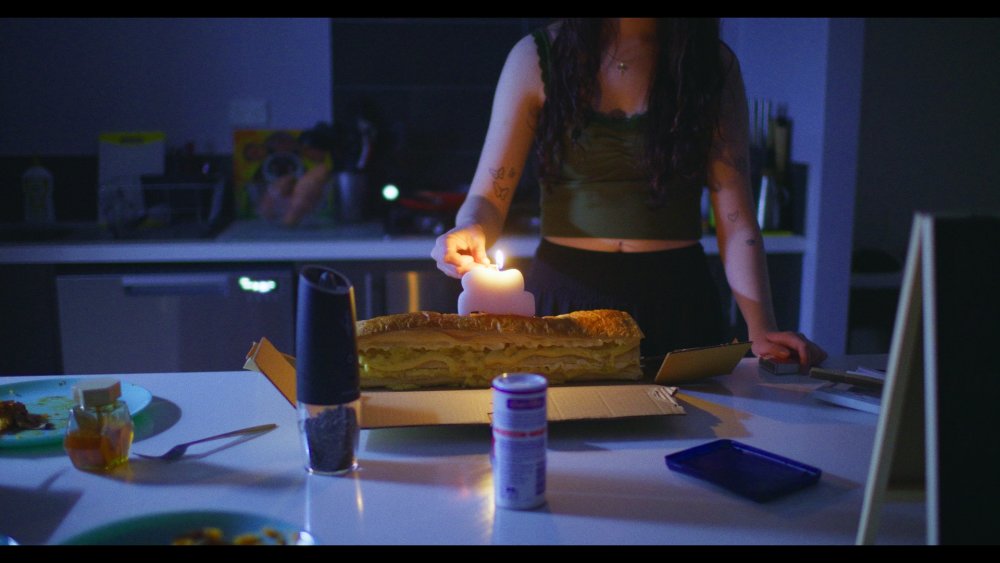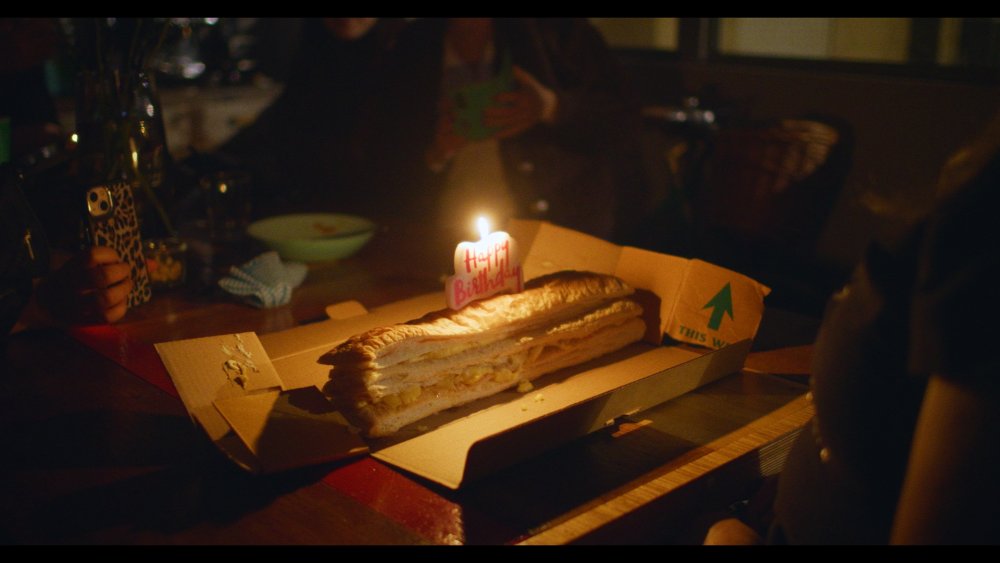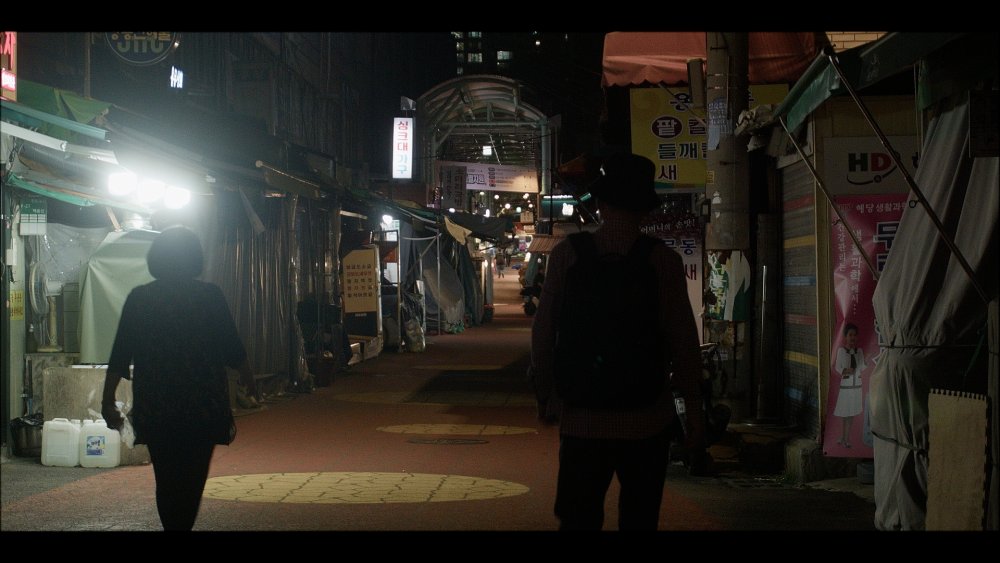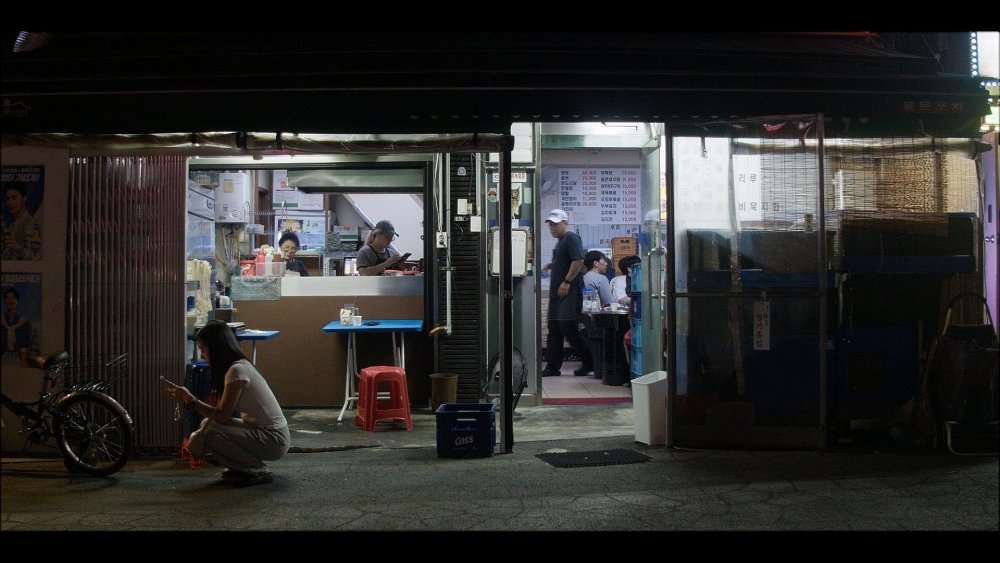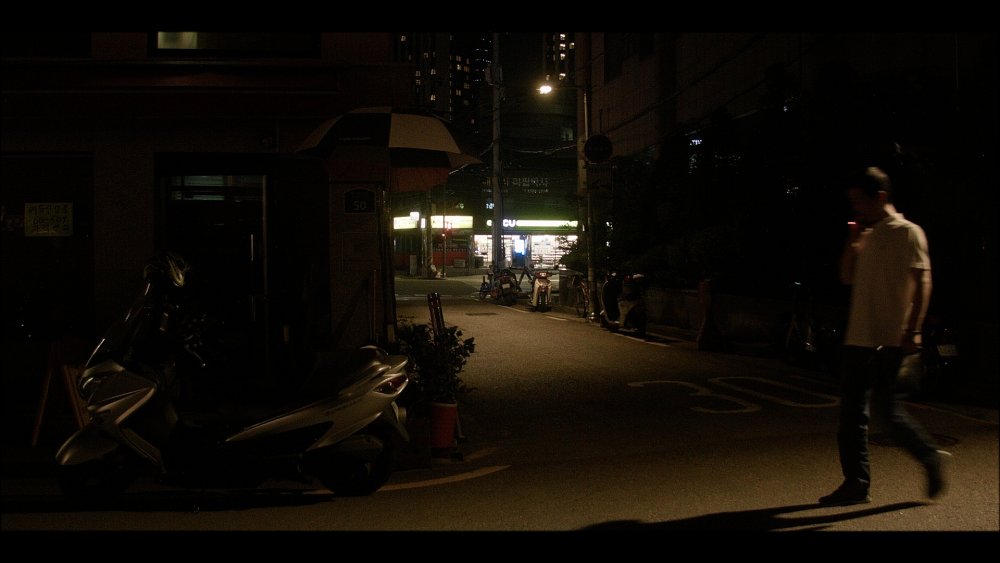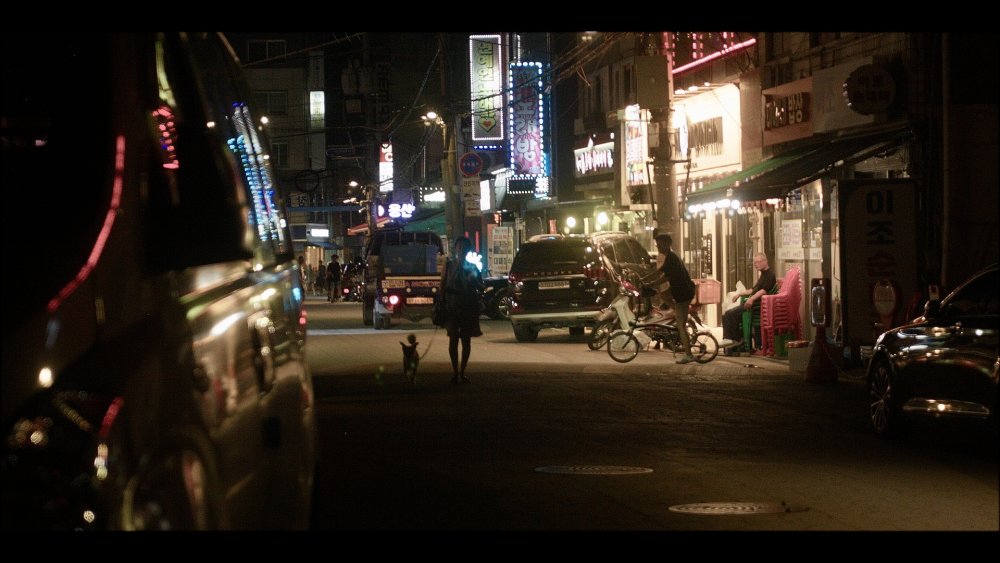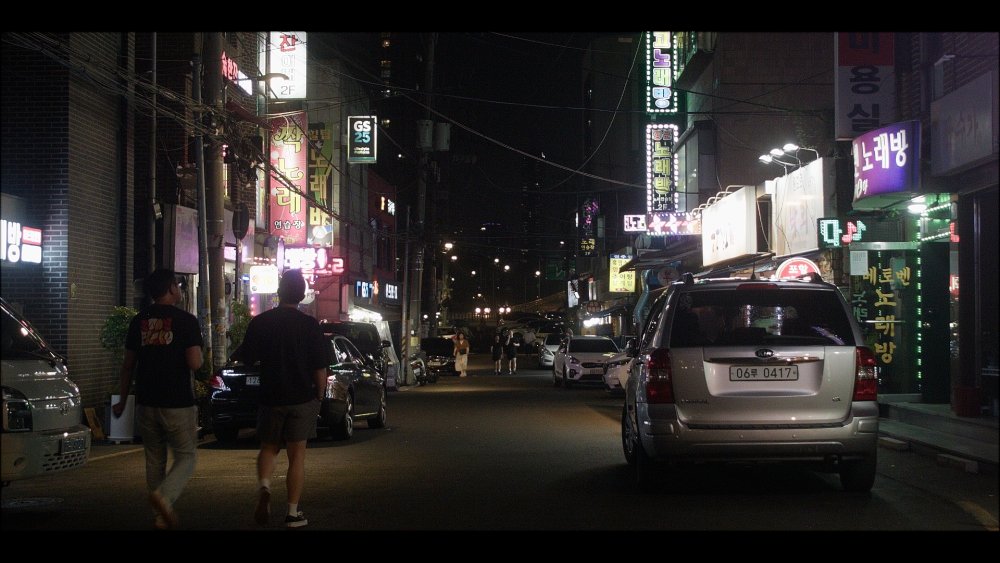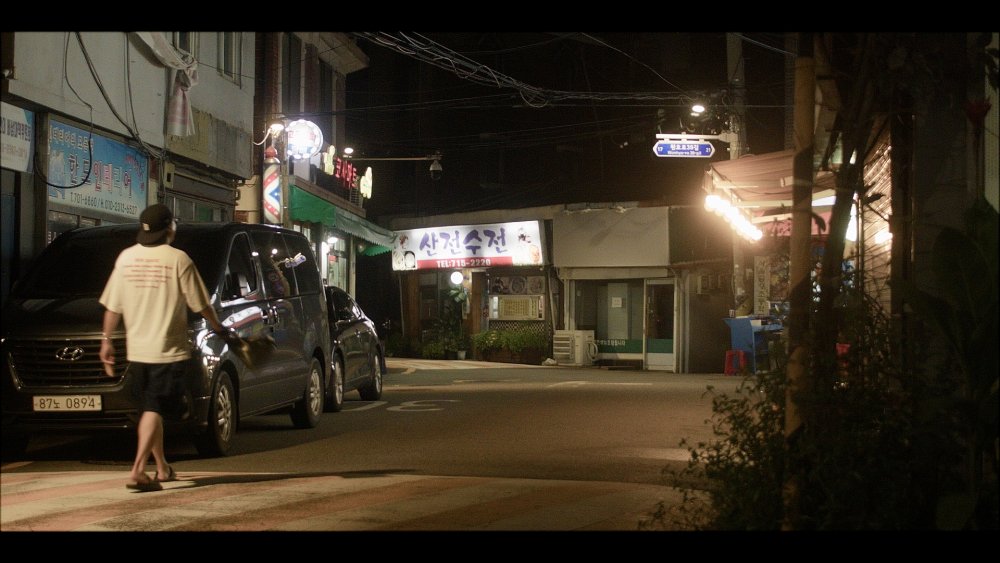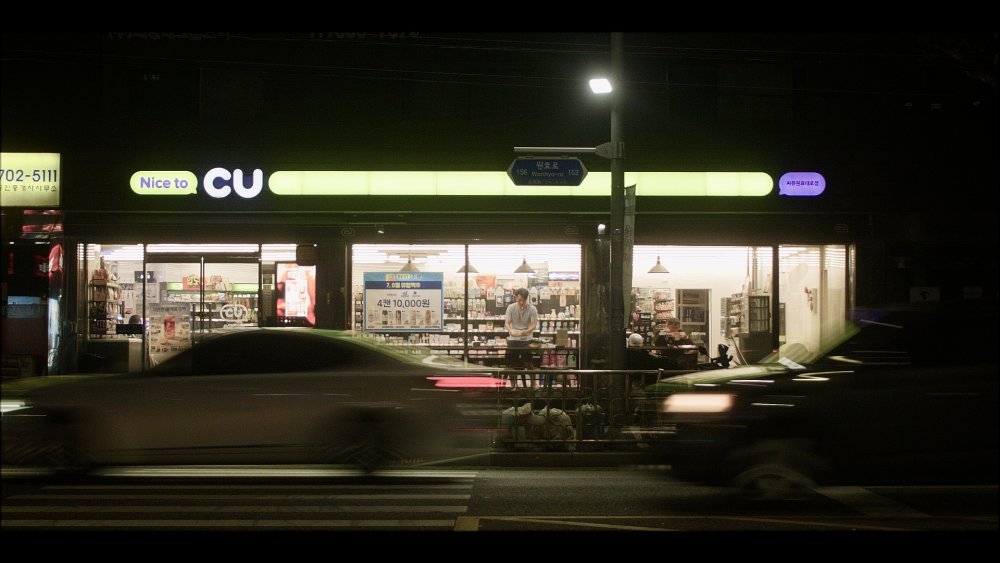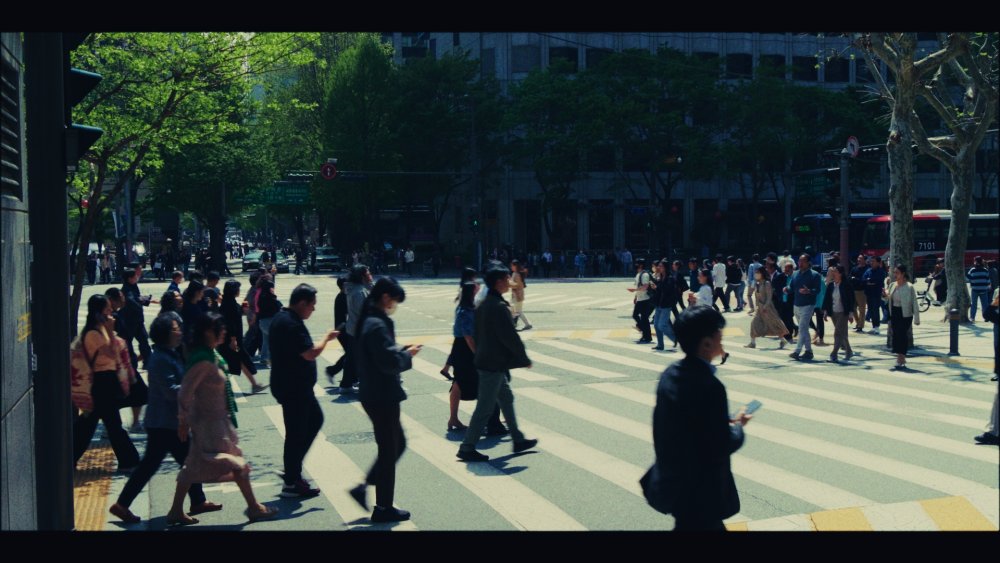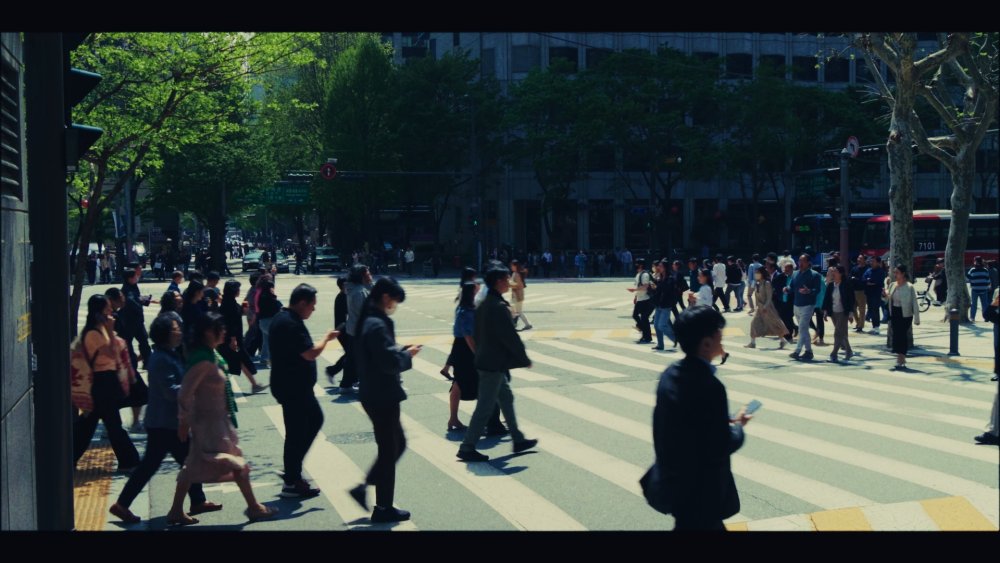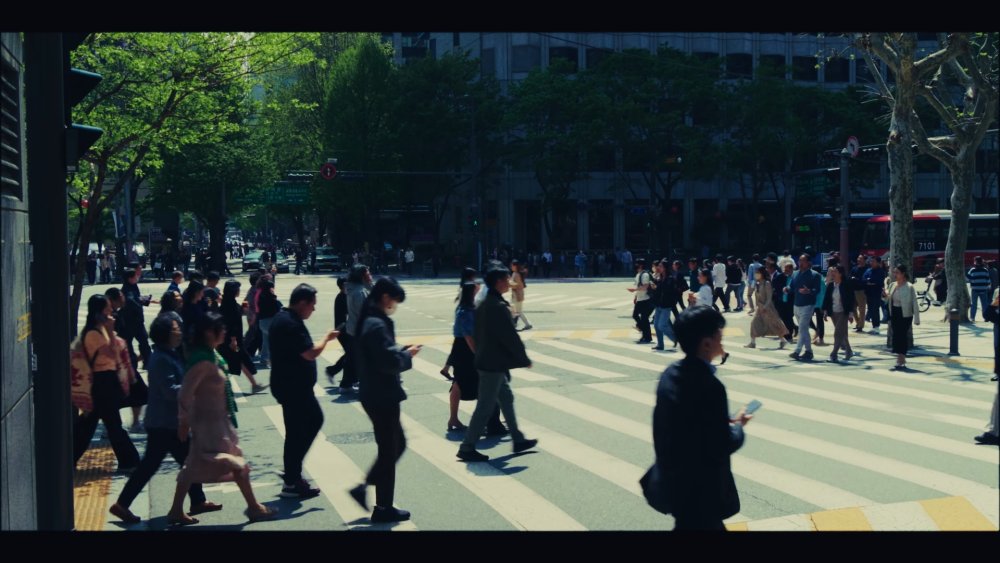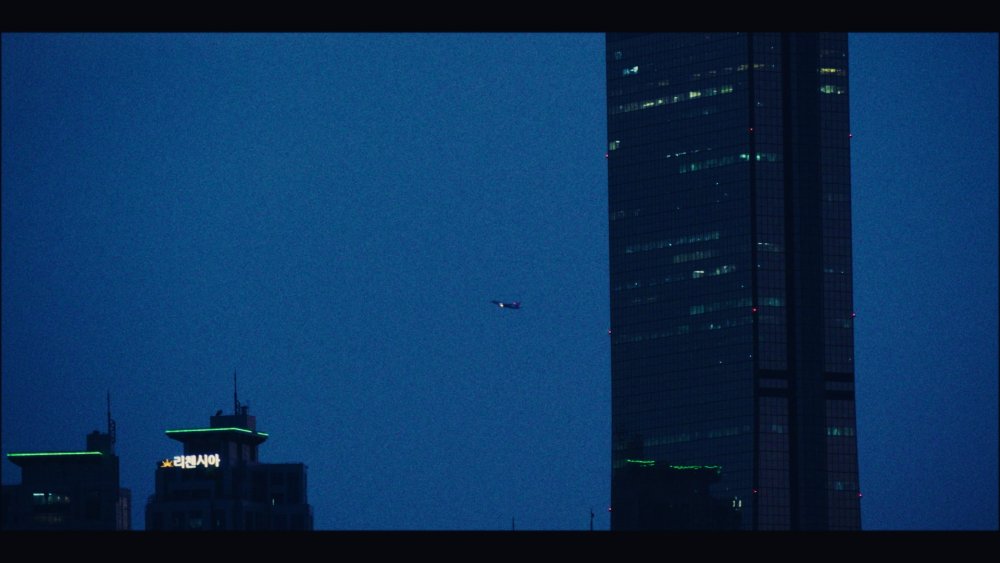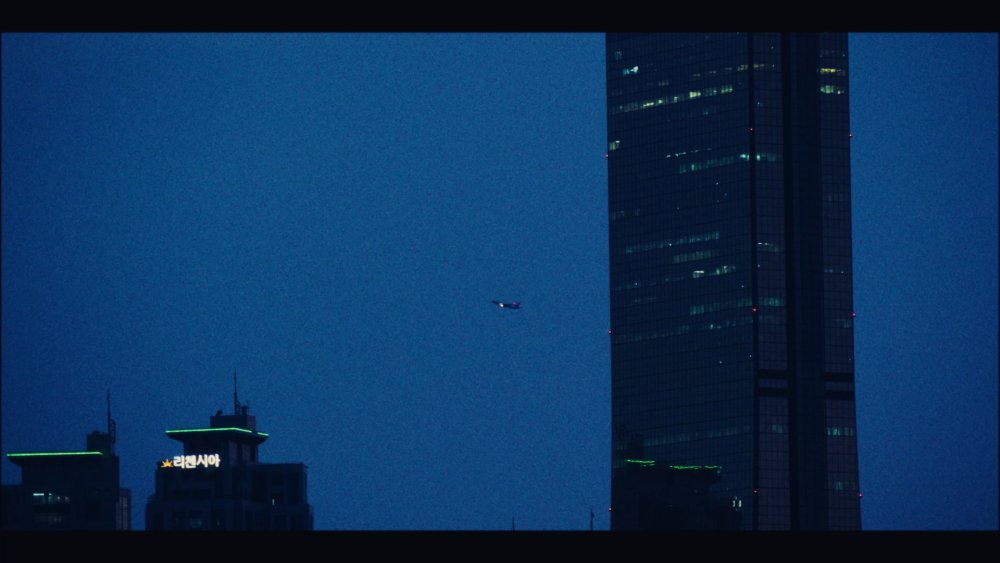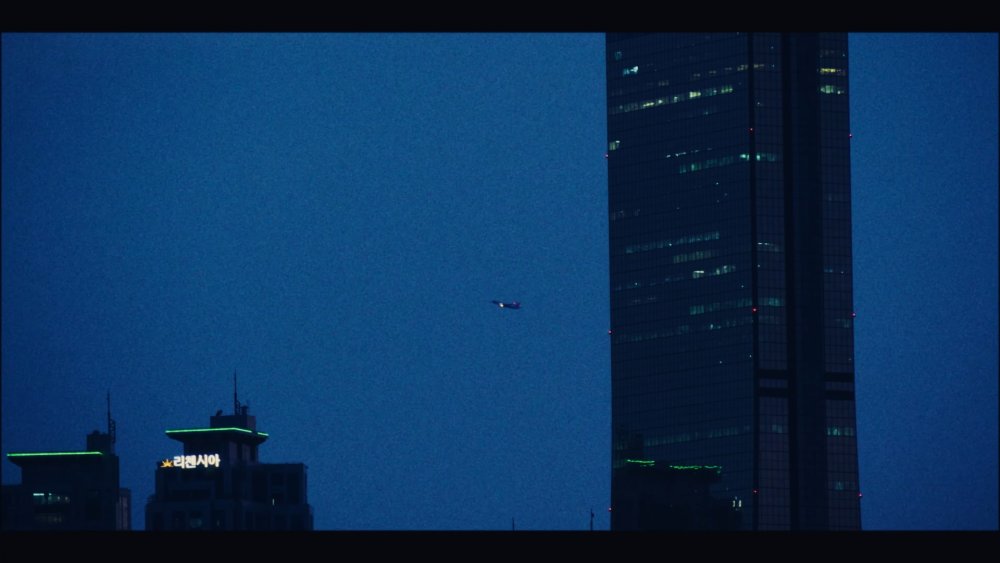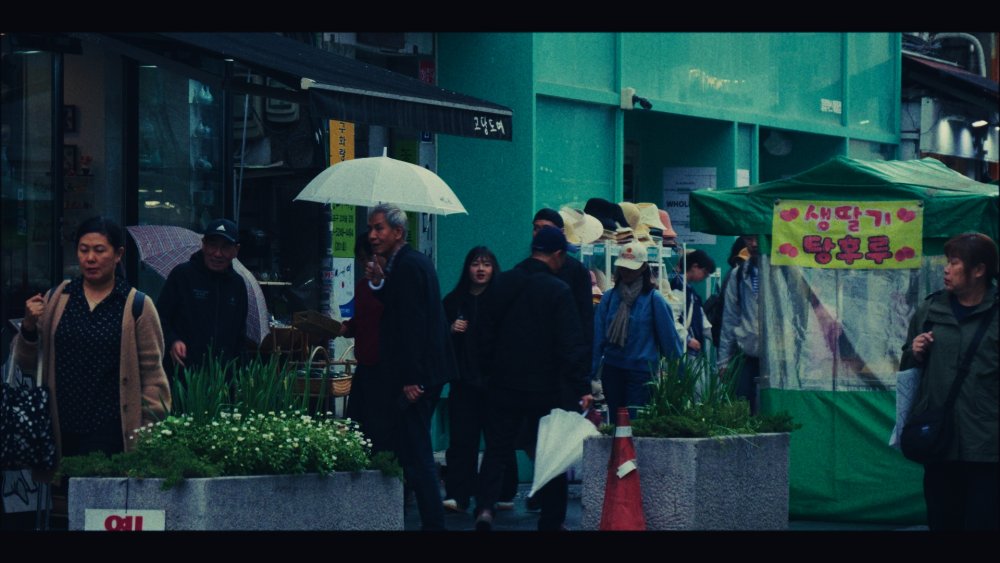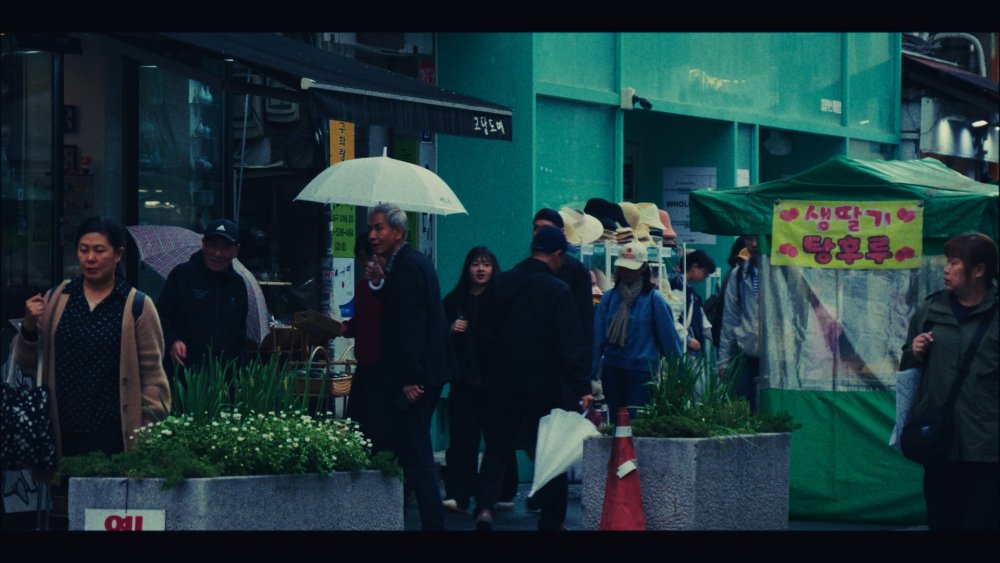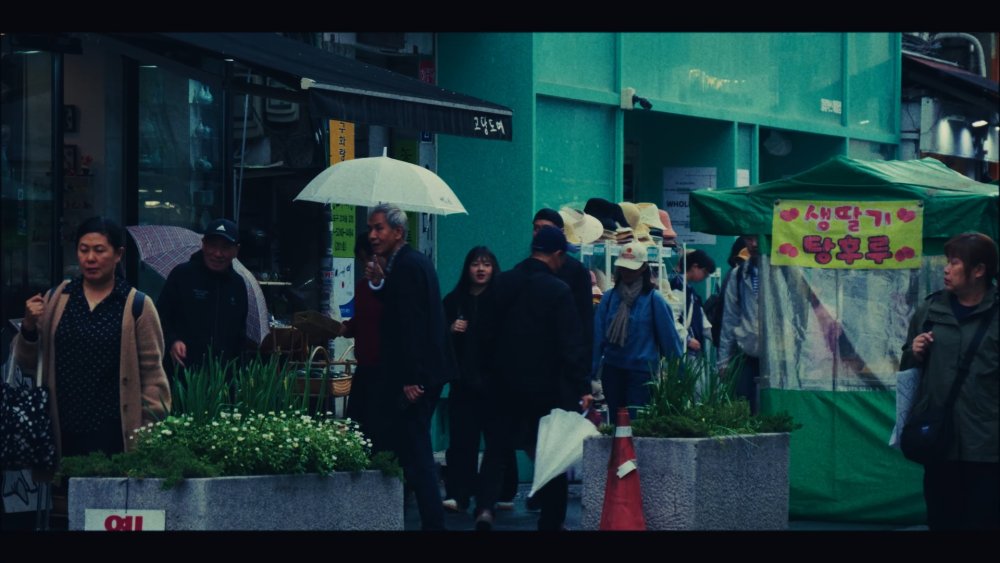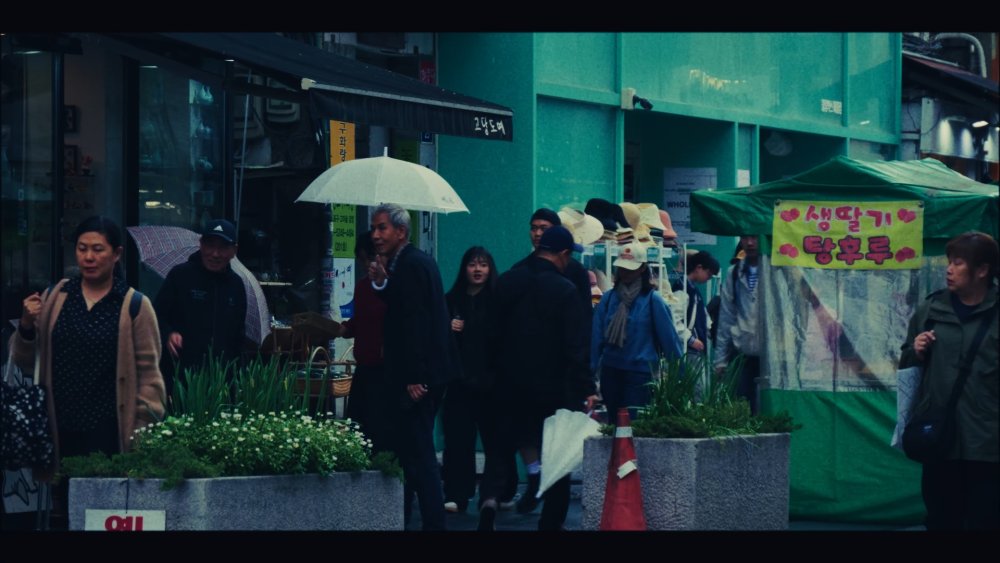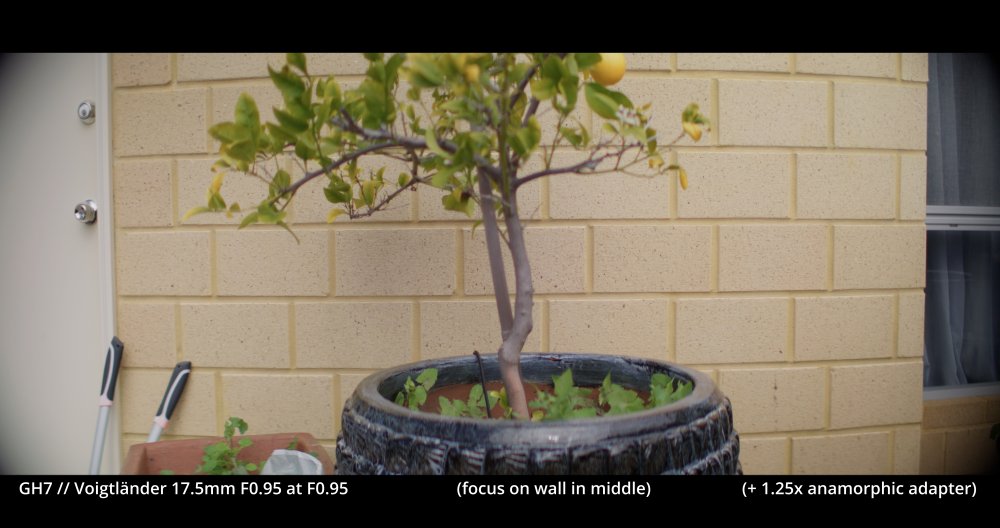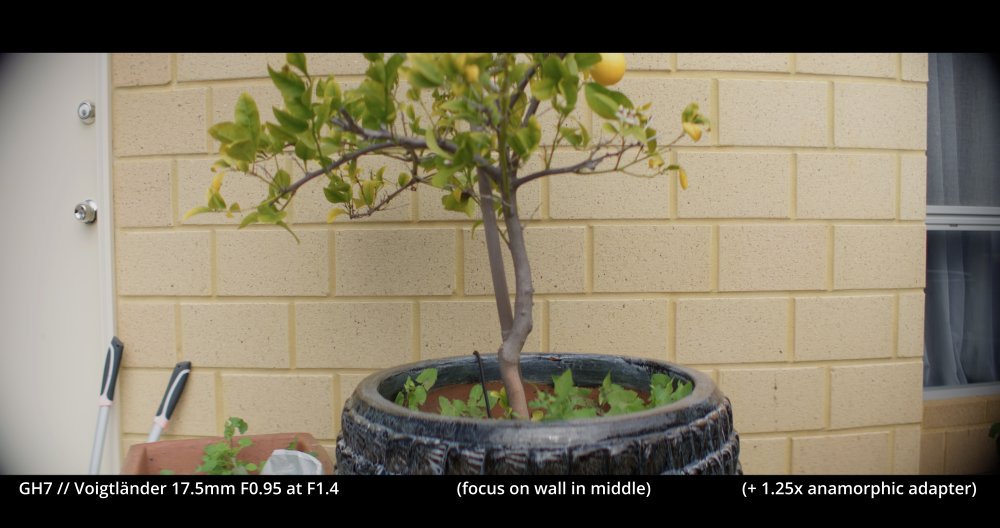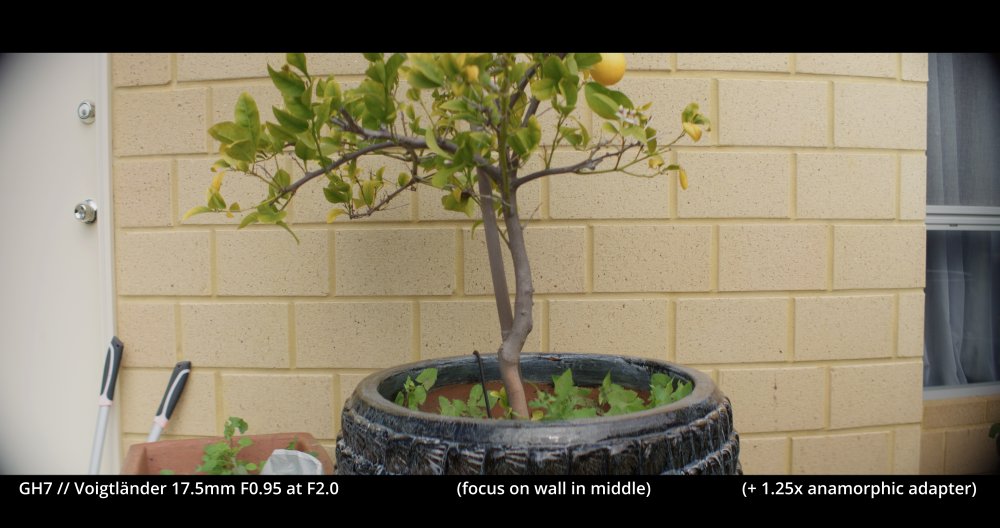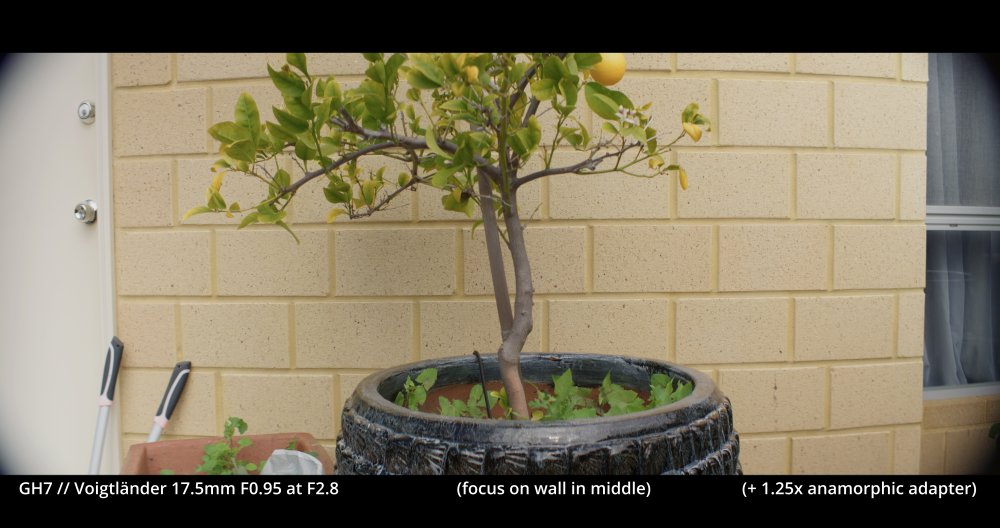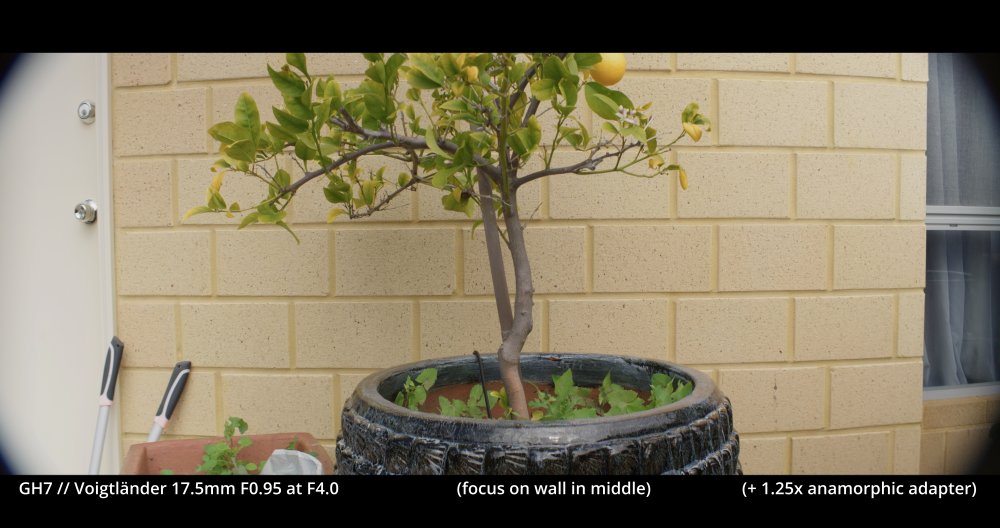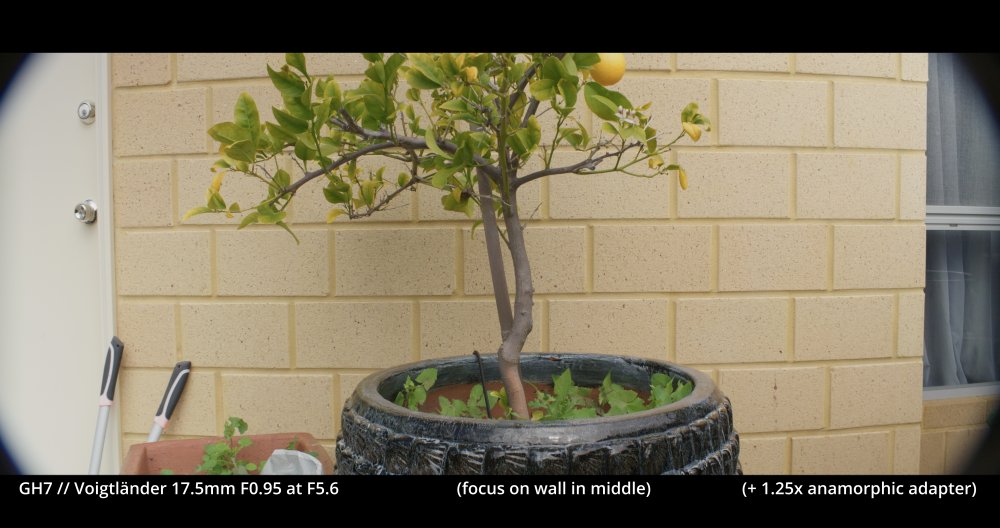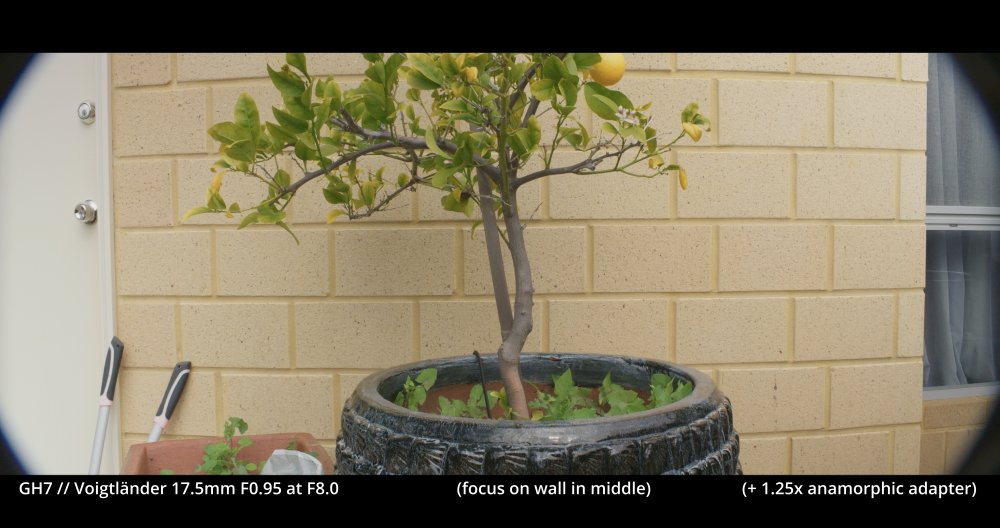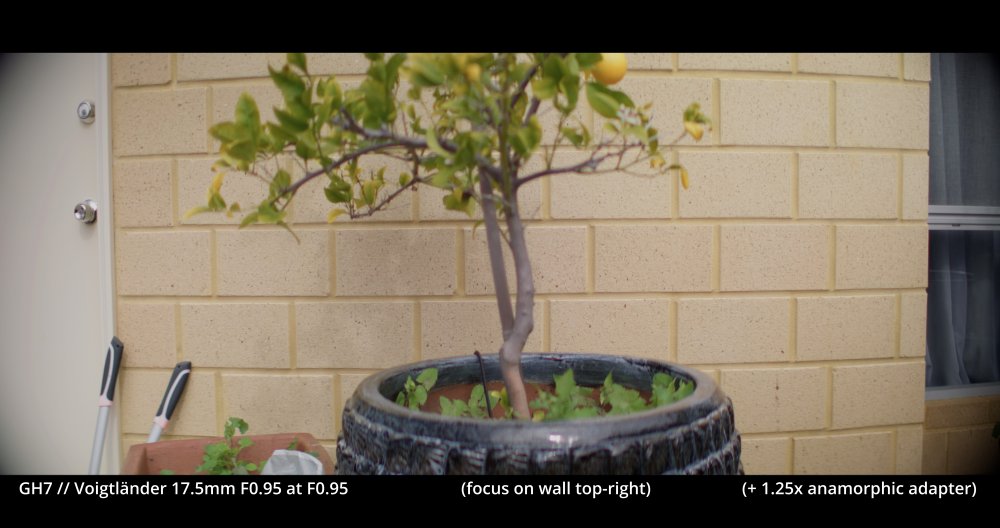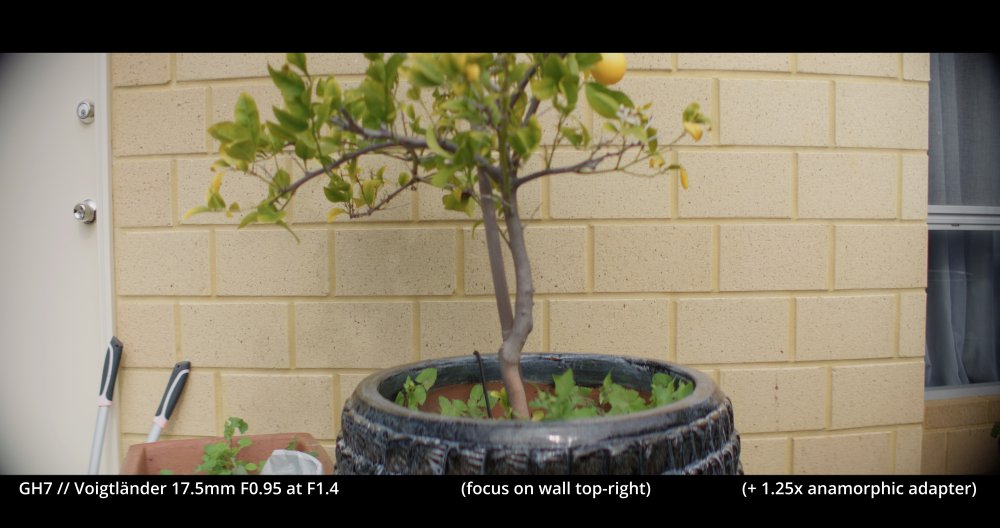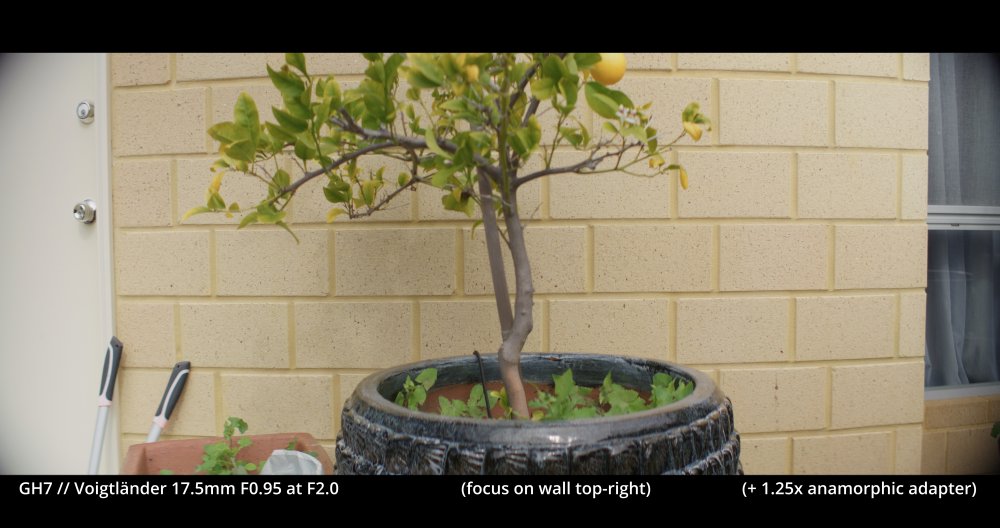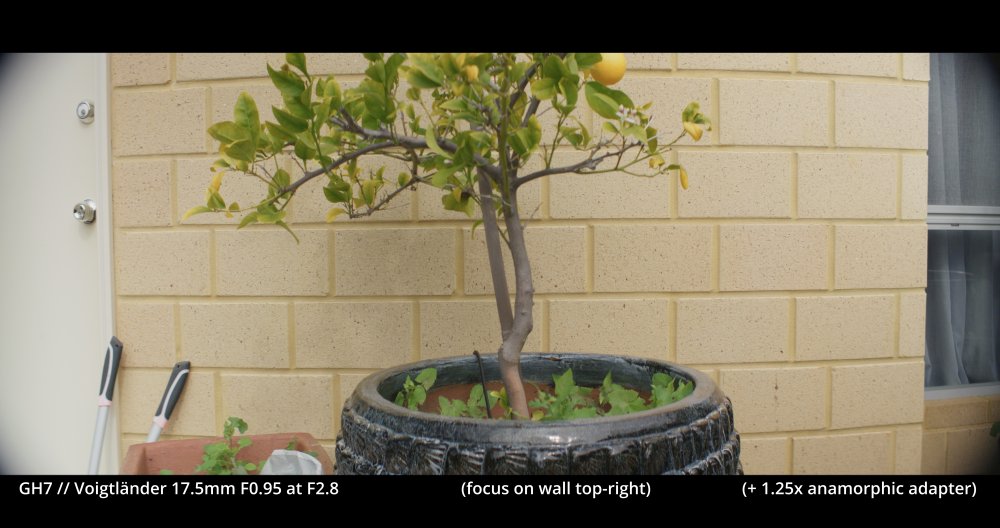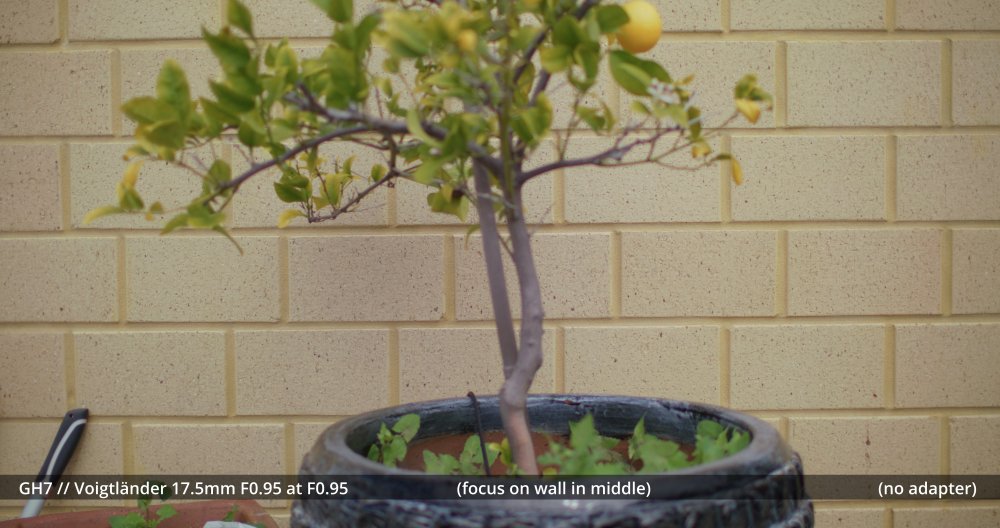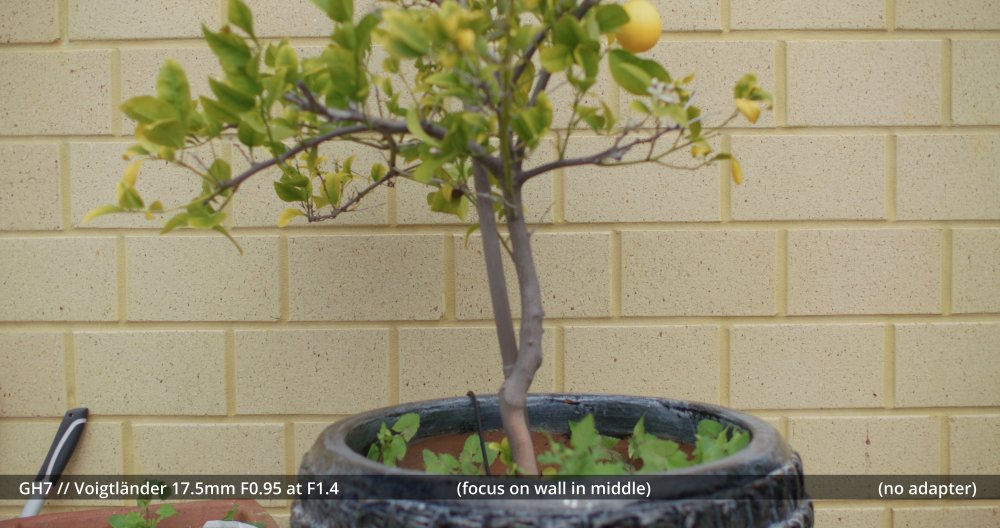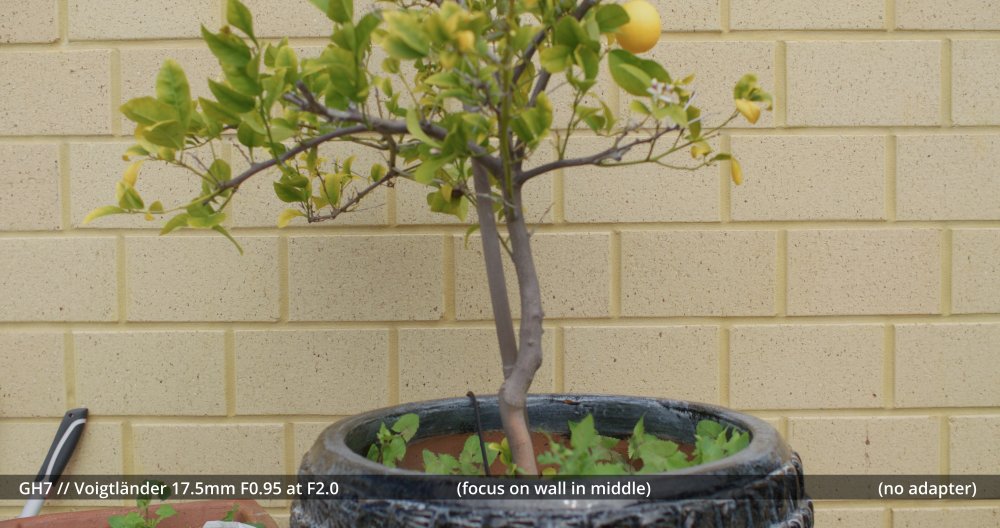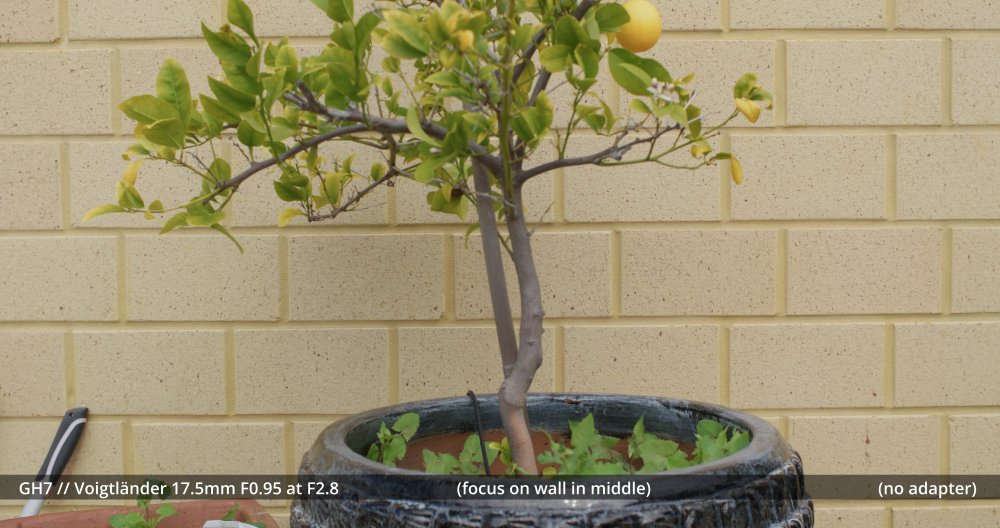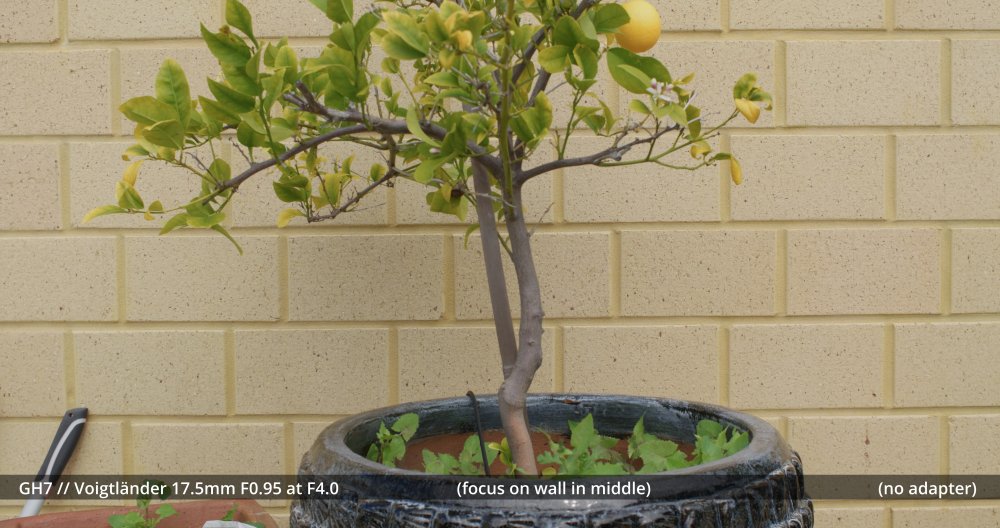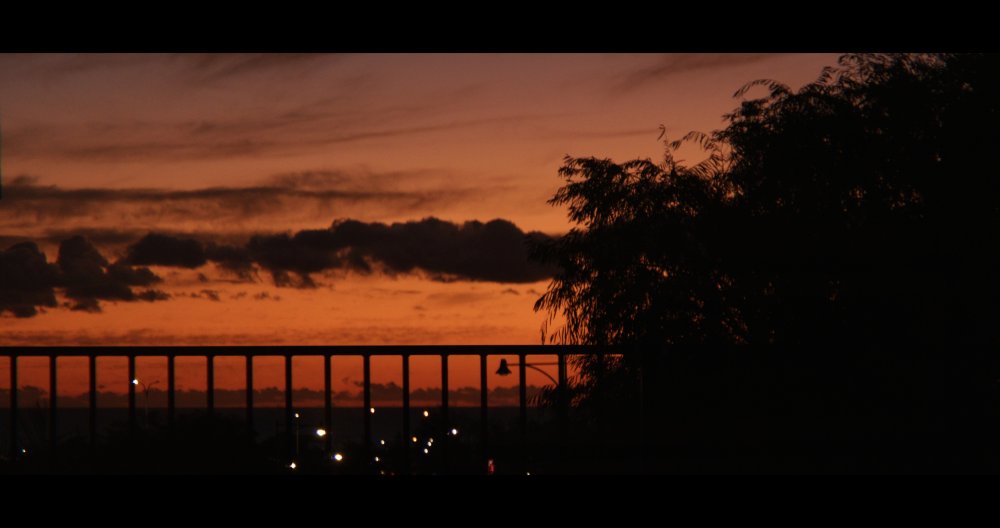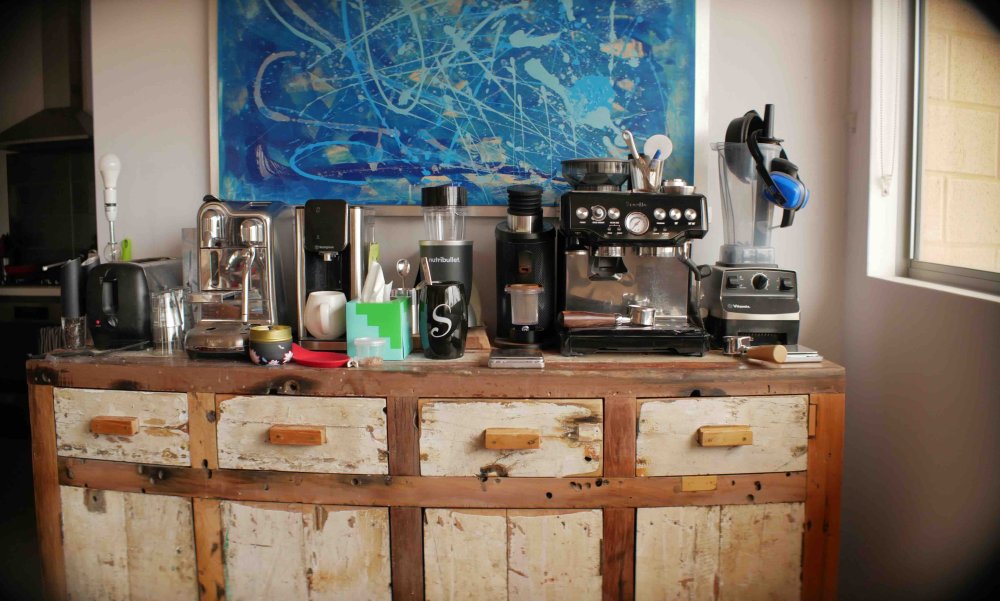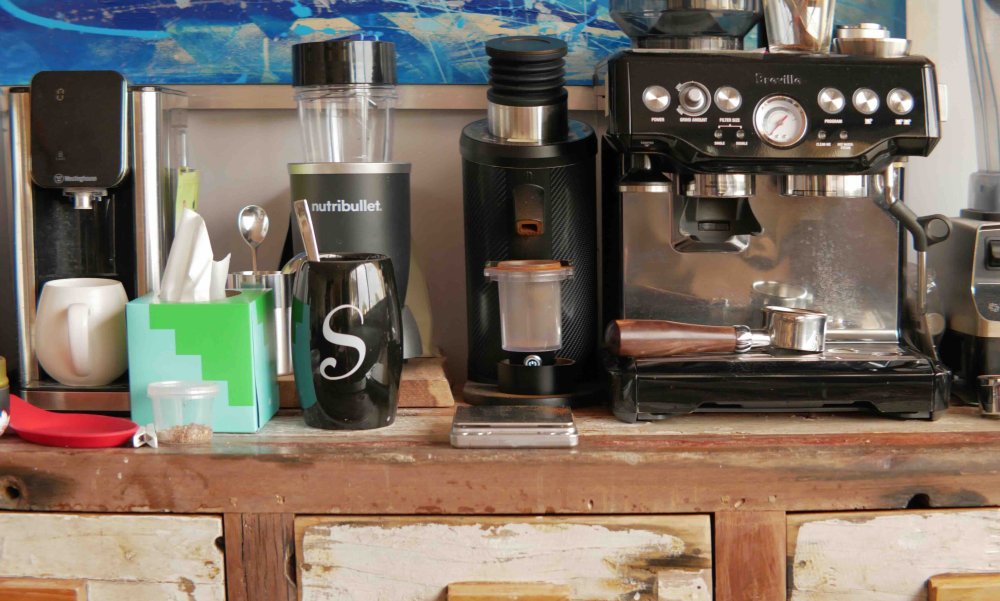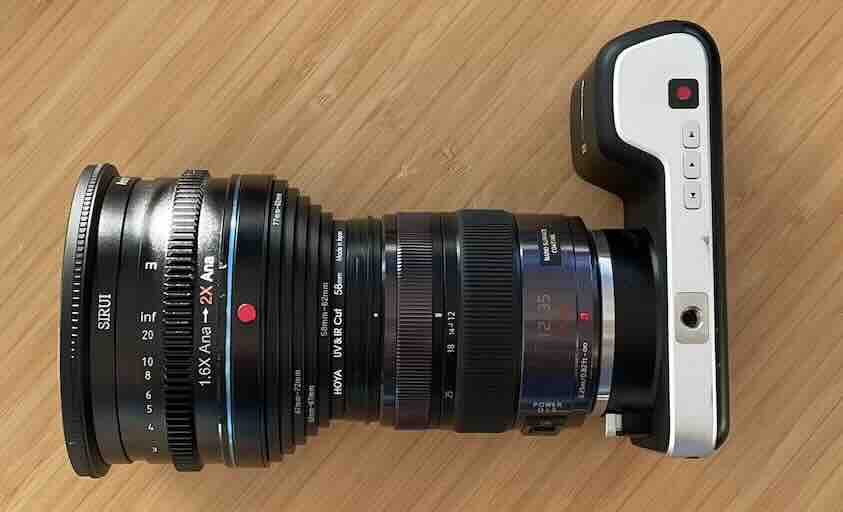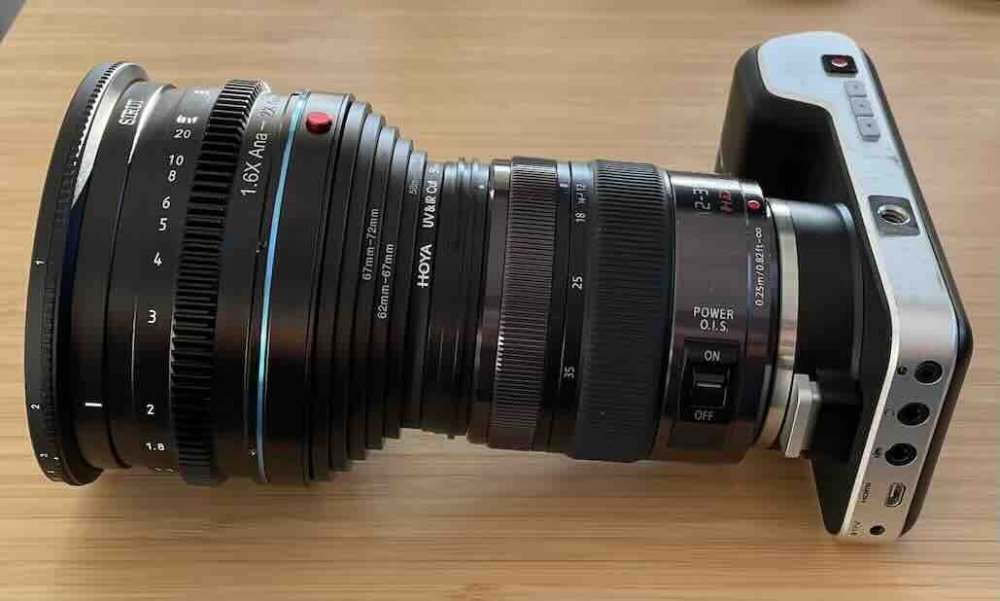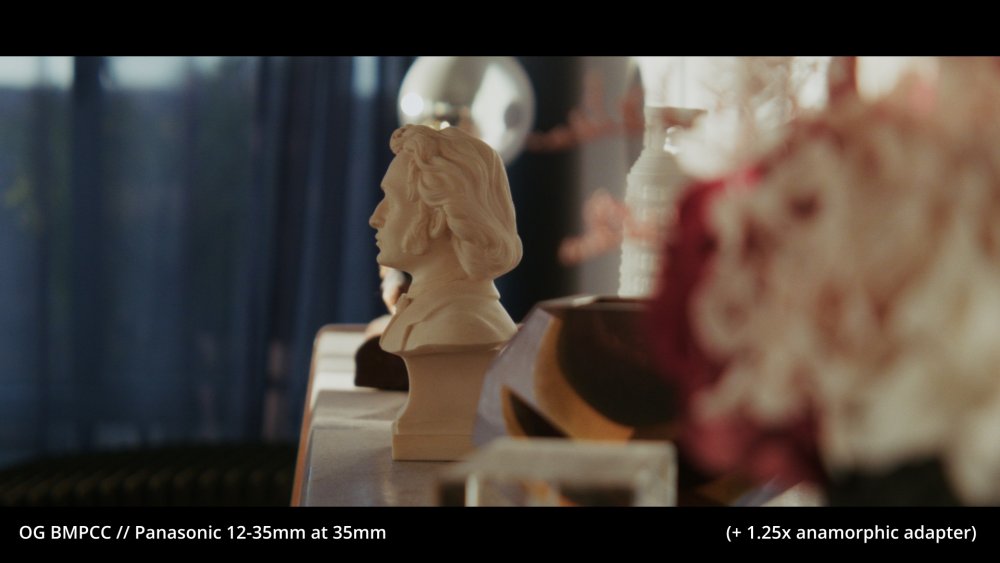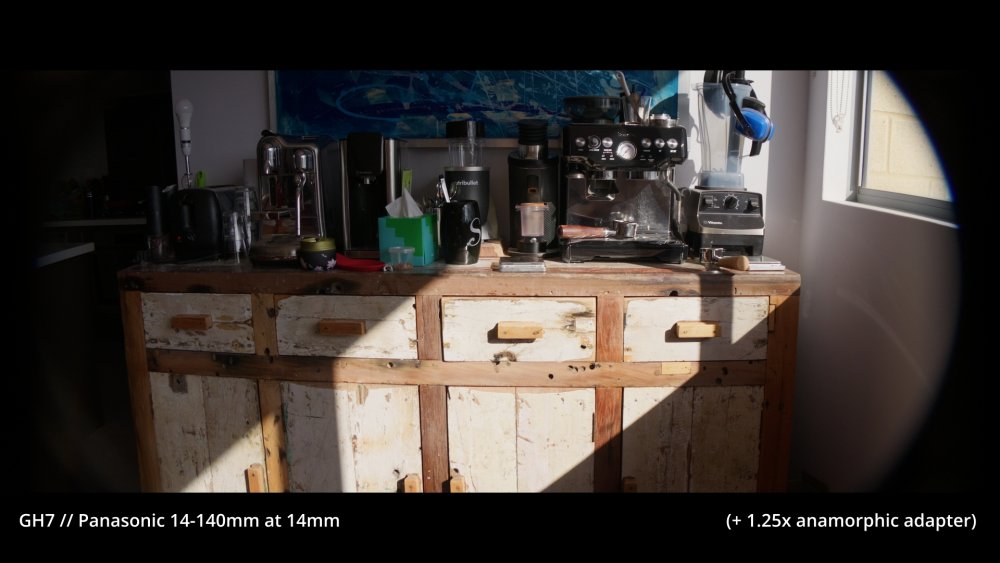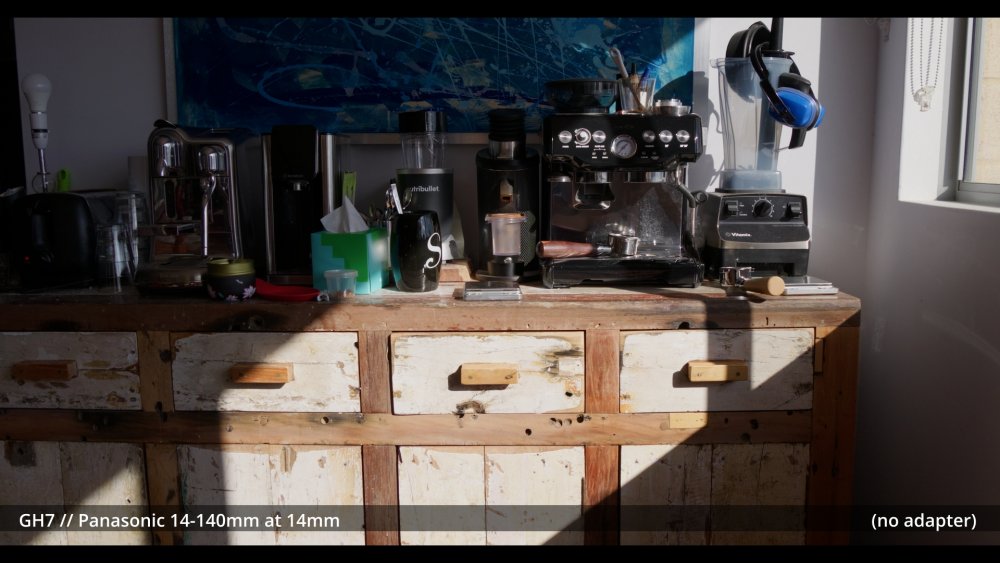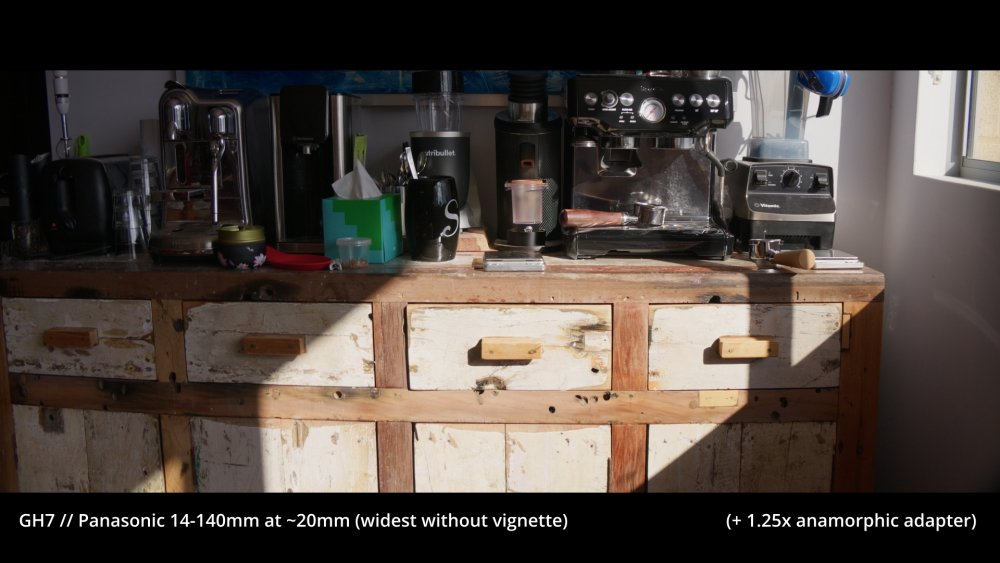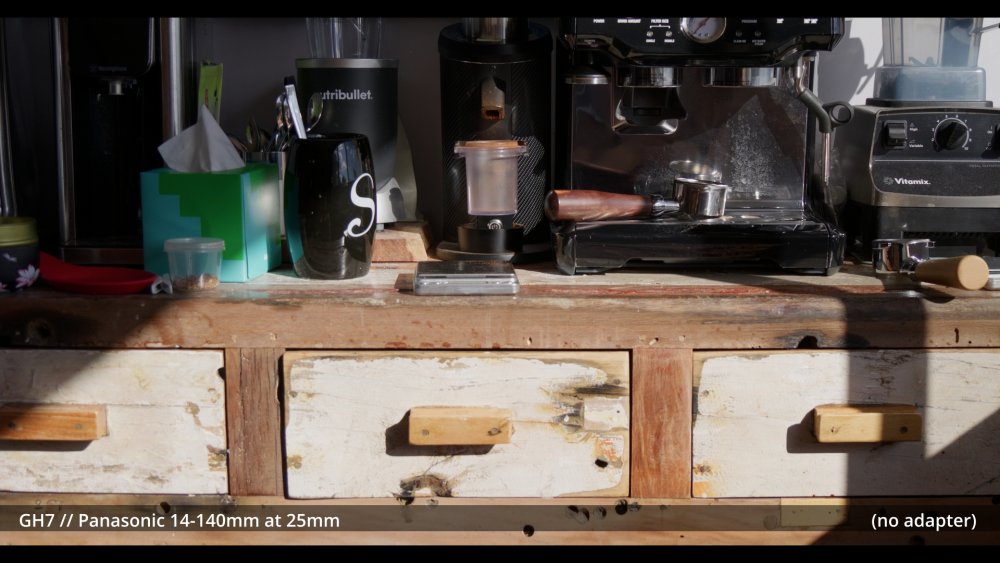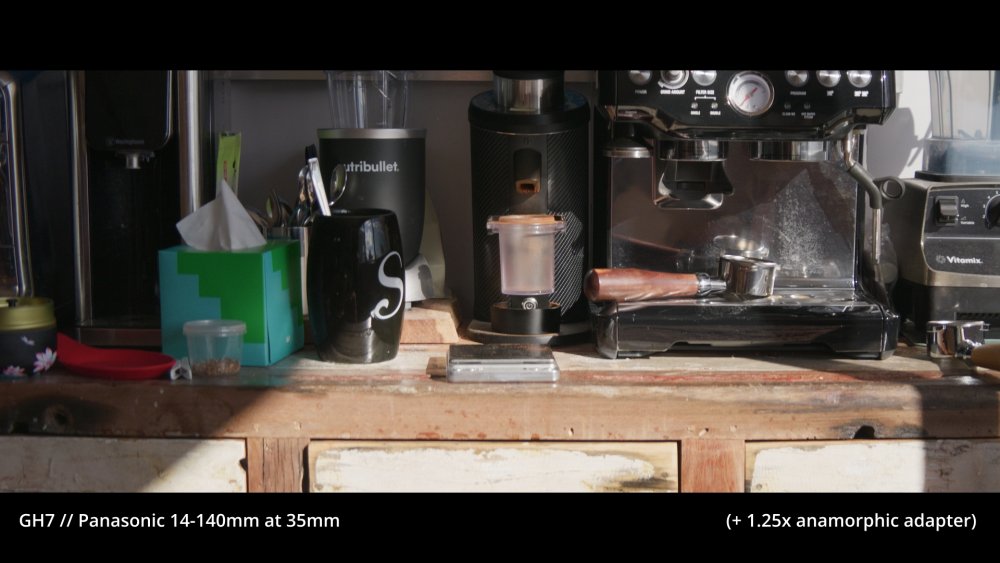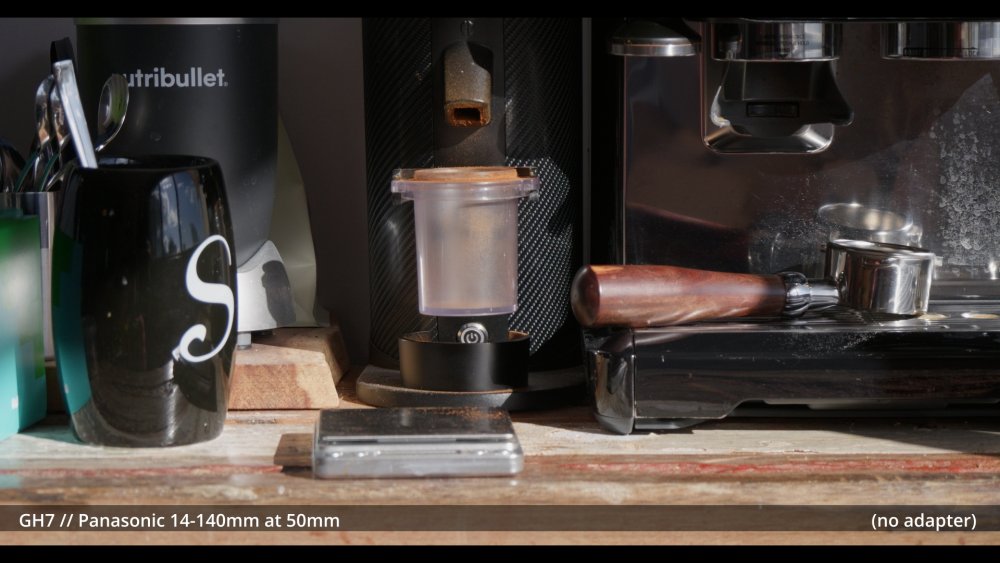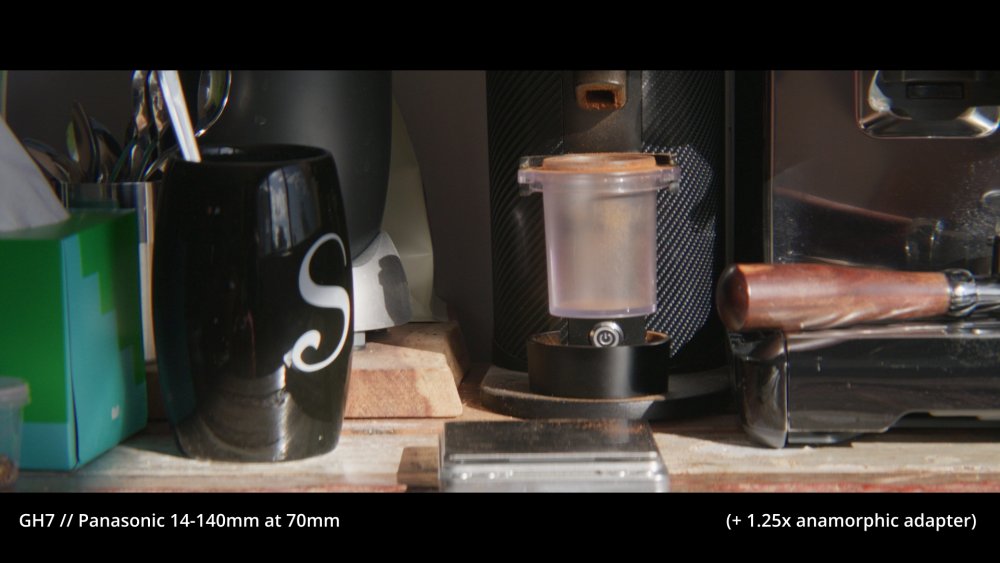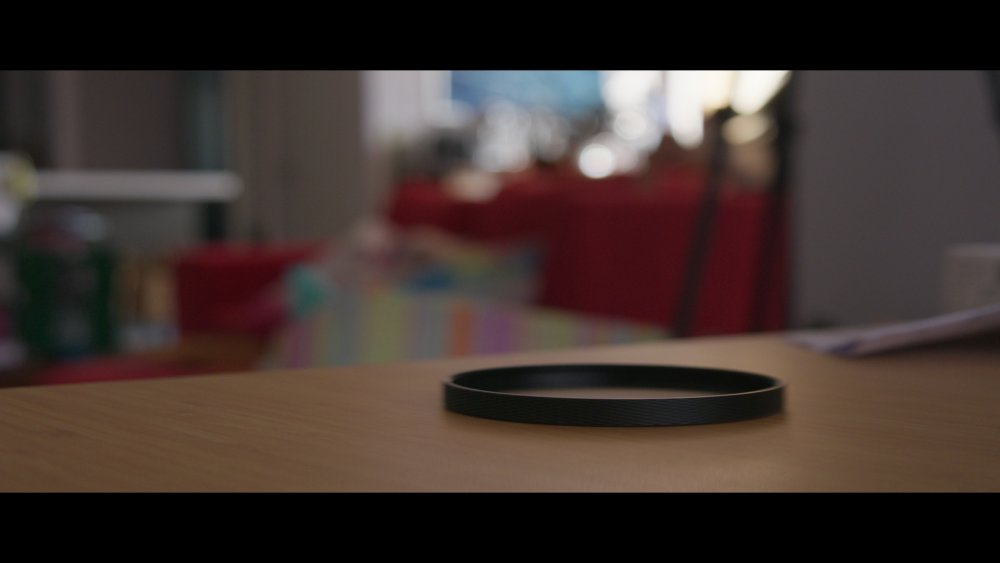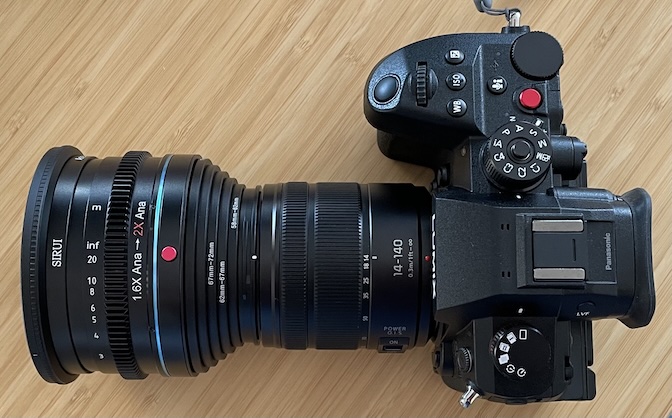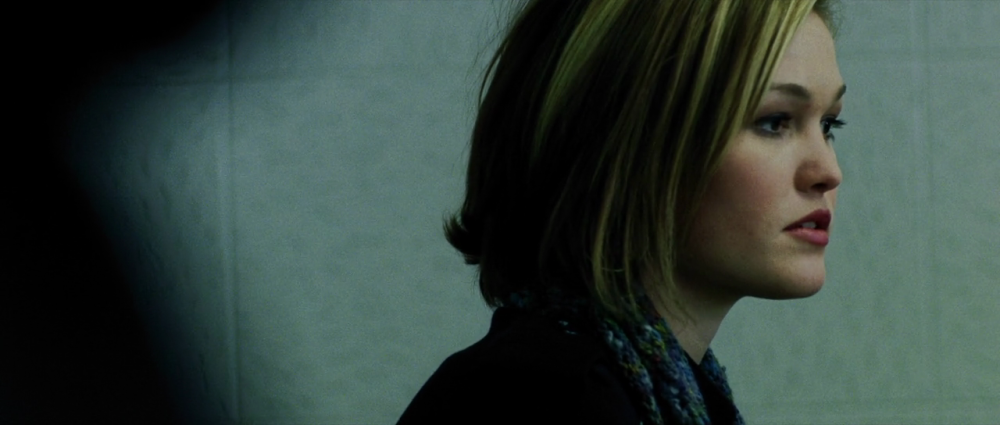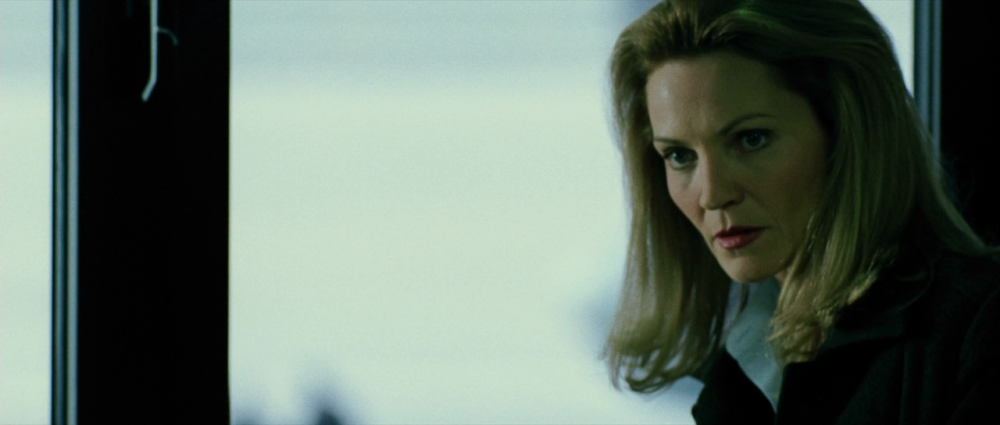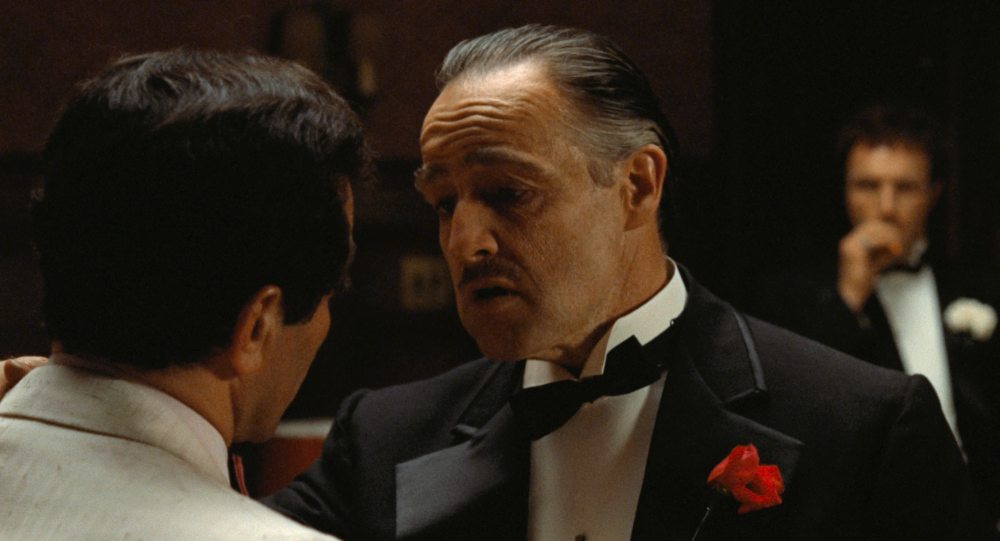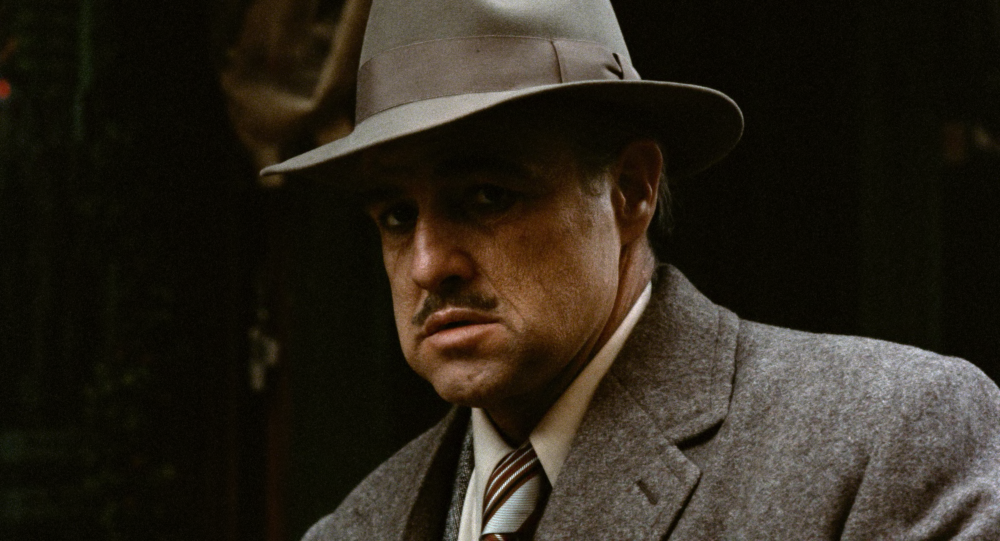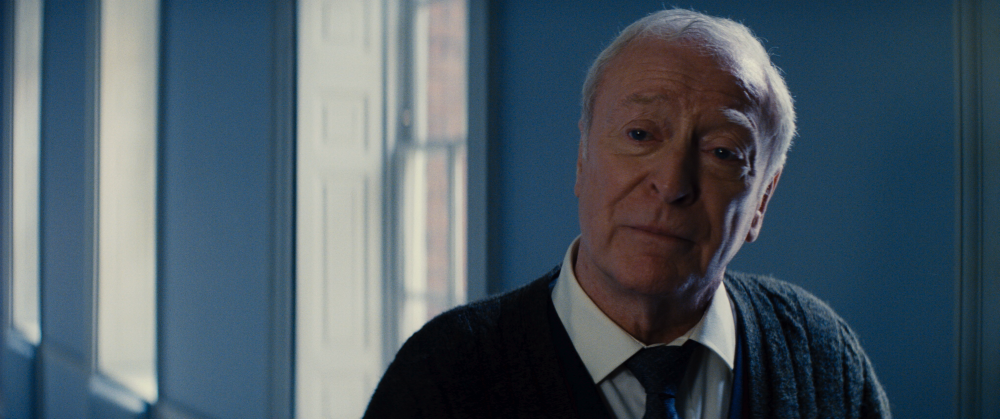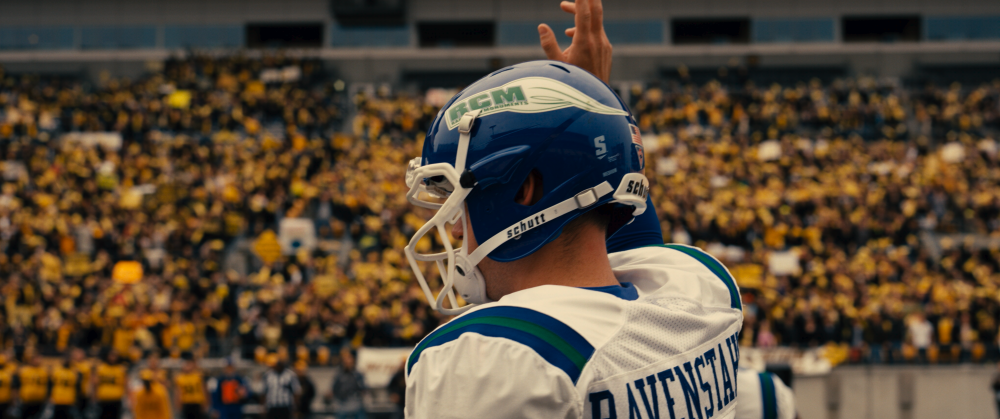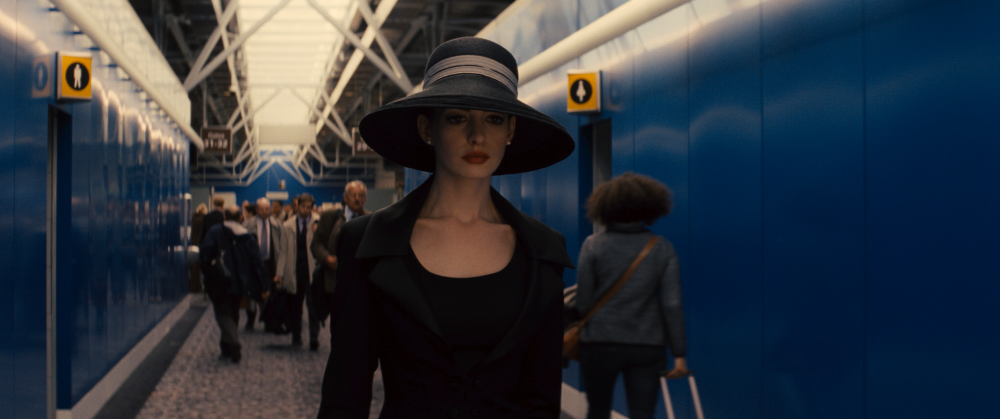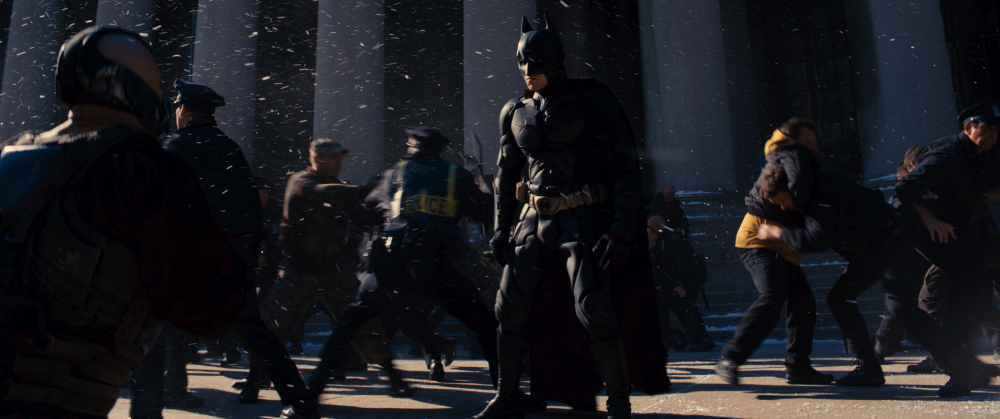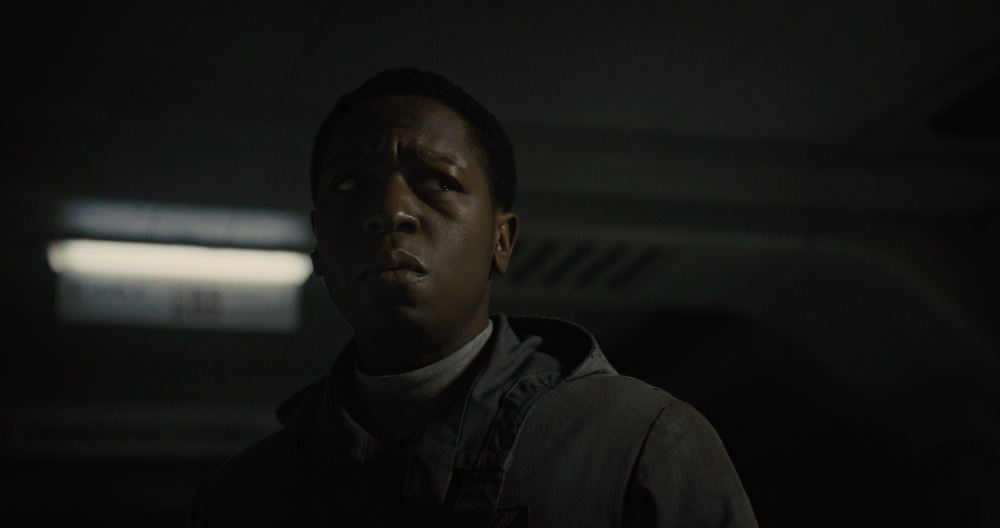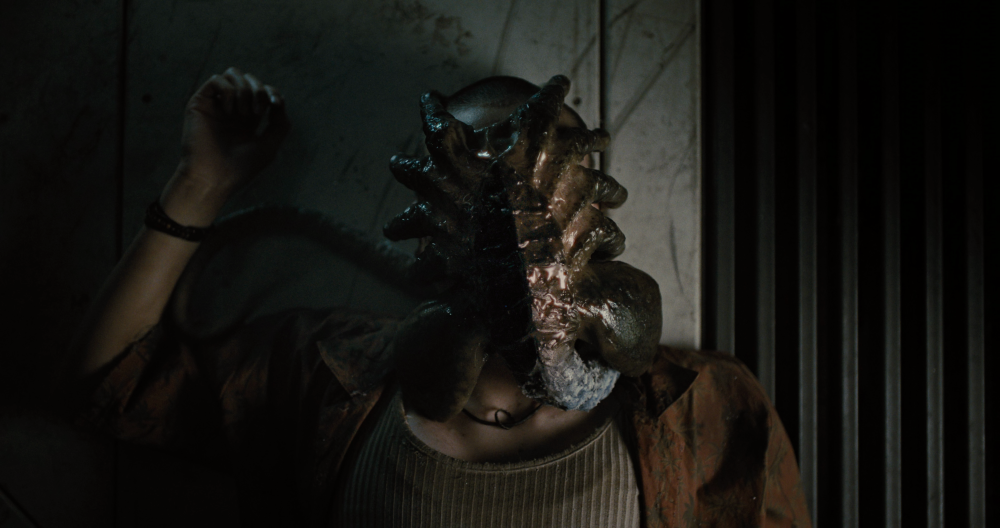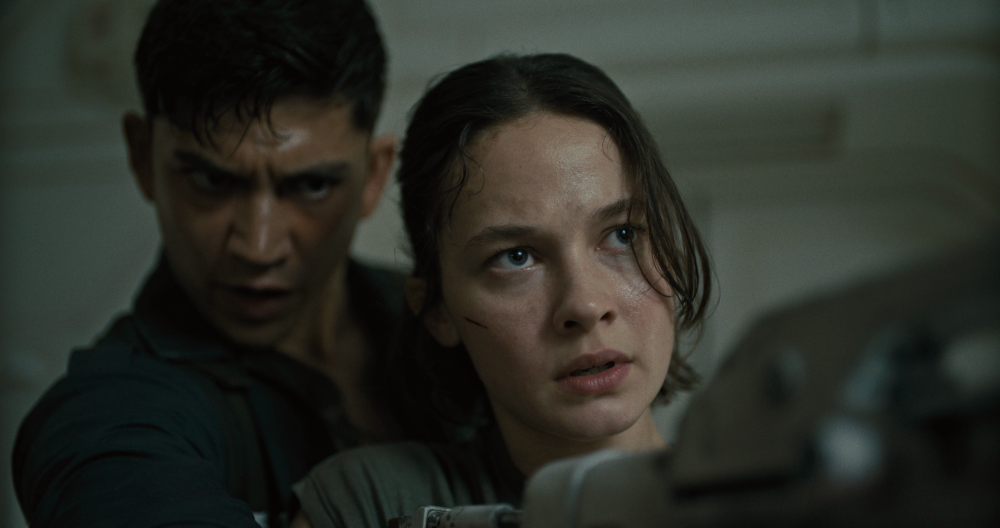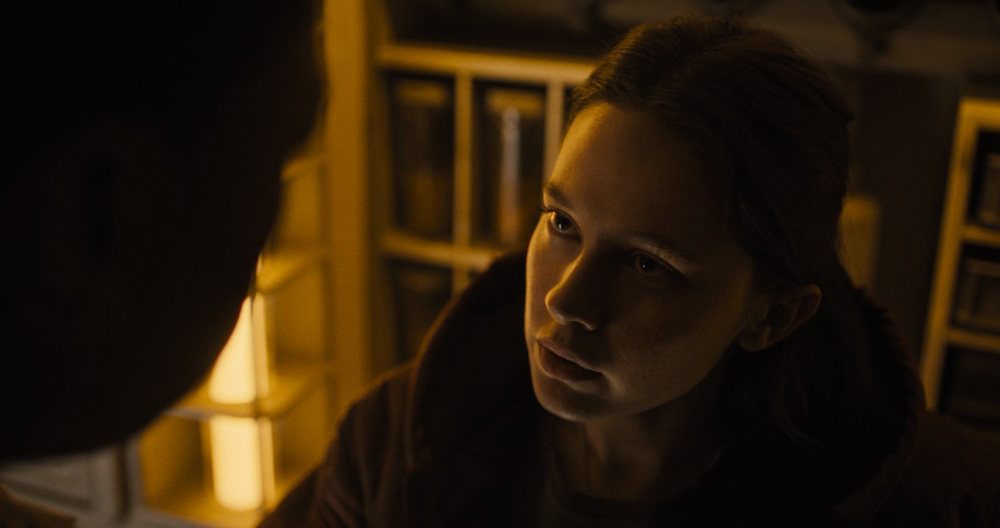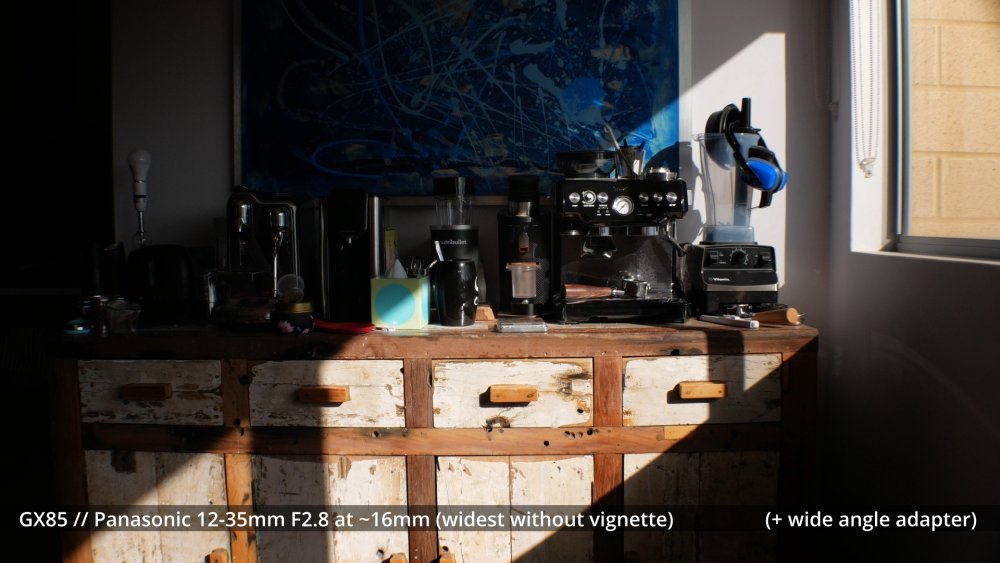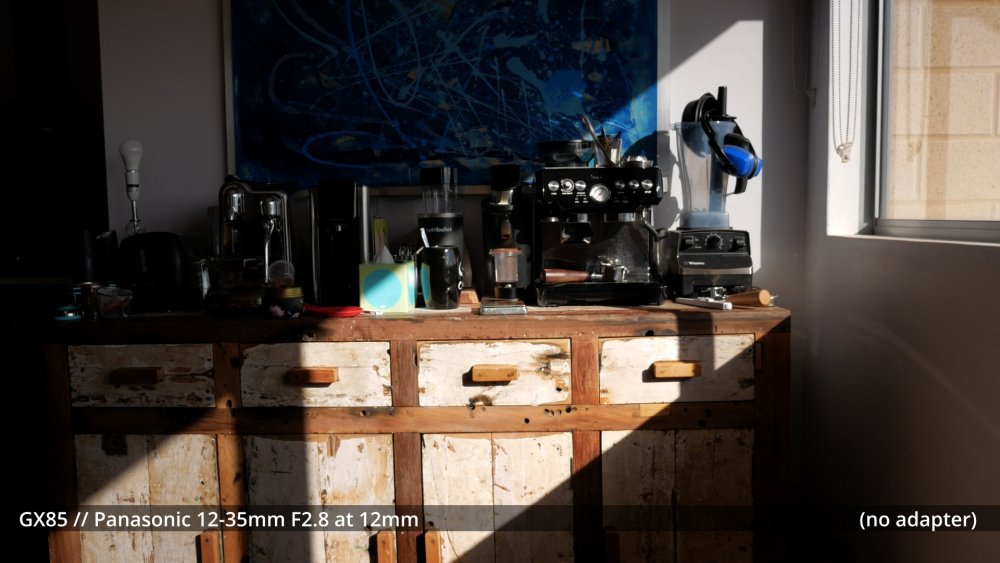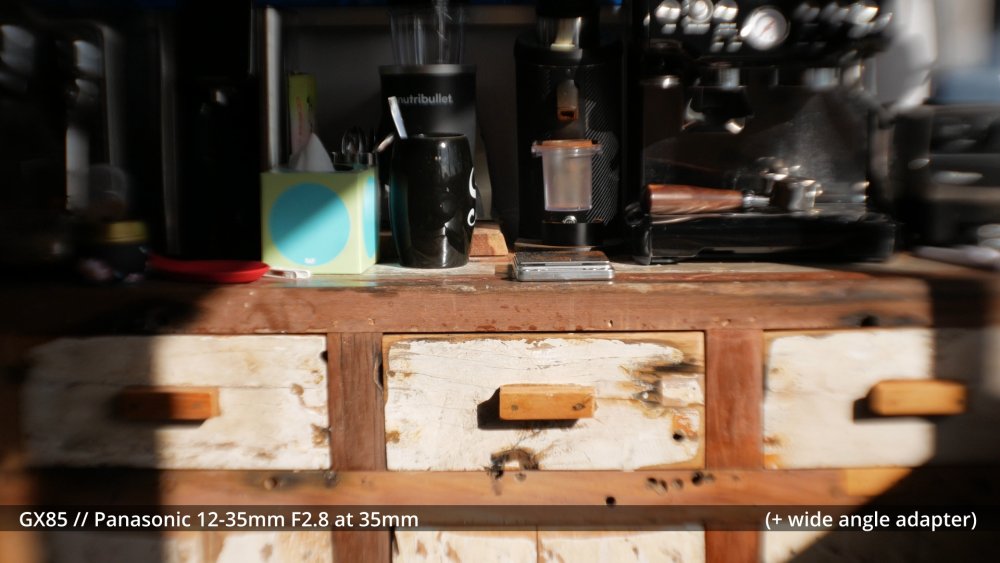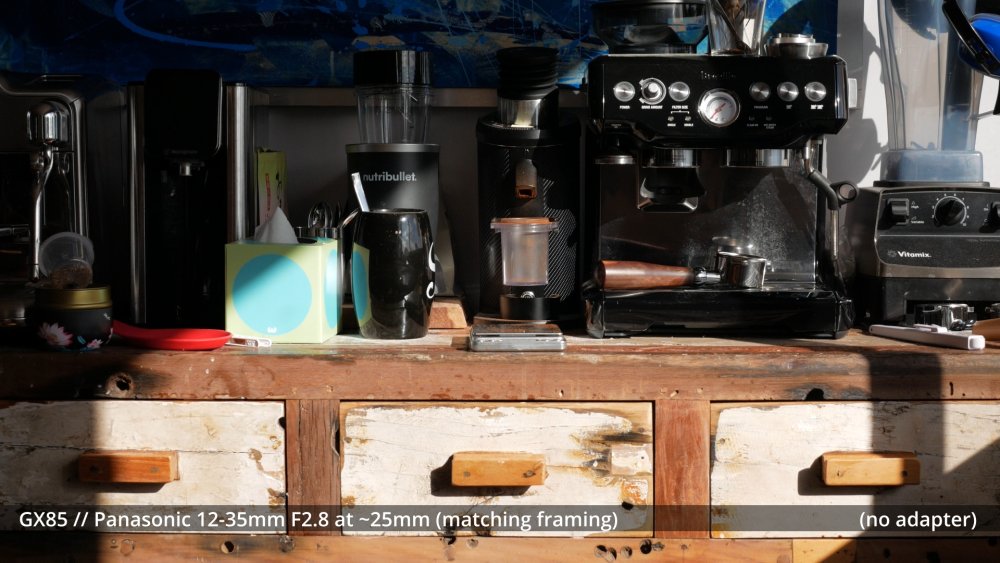-
Posts
8,027 -
Joined
-
Last visited
Content Type
Profiles
Forums
Articles
Everything posted by kye
-
OP asks for lenses that focus the Canon way.... Queue long discussion of lenses from Nikon, Pentax etc. OP asks for lenses that are slow to use wide-open.... responses include stopping down faster ones! 😆 😆 😆 Lots of people really just waiting for you to finish talking so they can go back to stream of consciousness without any thinking required!
-
Canon FD might do it - price might be an issue perhaps? Plenty of F3.5 or F4 lenses in the lineup, they focus the way you want, and you even get a choice of coatings (normal, S C, or S S C). Some of the slower ones are macro lenses too! https://cameraville.co/blog/list-every-canon-fd-lens-ever-made Zooms are also an excellent idea. An out of the box idea is to use faster lenses, but to keep the aperture wide open and cut a round hole in a lens cap and get the aperture you want that way. I'm not sure if this would reduce the DOF in the right way? It would definitely lower the exposure though, and would definitely keep the bokeh the shape you want.
-
I don't really use the audio for dialogue so can't really comment on it specifically. To zoom out and think more holistically about sound, and also a bit about getting in front of the camera, there are a few approaches. High-quality sound on location. This is great but you pay for it in terms of paying for extra equipment, extra faff of charging it, setting it up, using it, cleaning and maintaining it, etc. High-quality in-camera audio is the most convenient and the most expensive to get. External audio makes it easier / cheaper but creates extra work to keep the audio files managed and to sync them in post. Acceptable sound on location. This could be through a combination of average in-camera audio and average external audio. The in-camera audio could potentially using on-camera mics like the Rode VideoMicro or a plugin Lav mic that don't require any power and are plug-and-forget but are dependent on the quality of preamps in the camera. The external audio could be as simple as using a smartphone right next to your mouth, or using the integrated mic in the headphones as a short lav mic. I've seen lots of vloggers do this in very noisy environments and it works fine. First example, second example. Record in post. ADR (Automated Dialogue Replacement) is where actors re-record their dialogue in post production to match their lips in the footage. It is so common that many films simply didn't bother to get good sound and created the audio (dialogue, sound effects, sound design, the lot) in post after the fact. I've done this before on short films and if you take a bit or time to do it then you can get results indistinguishable from doing it on-location. Recording in post also comes into the idea of appearing on screen, or not. By taking lots of notes and recording your thoughts during the trip (potentially just using voice memos on your phone at the end of each day) you can then narrate the finished film and have a significant presence in the finished edit, have high quality audio, and also take away the burden of getting great audio for everything that happens throughout the whole trip. Narrating the film will also enable you to communicate ideas and feelings and information in a concise way with carefully chosen words, rather than trying to piece together a coherent summary from fragmented snippets of footage. Narrating the final piece also takes a huge burden off the footage too, because anything you didn't capture can be explained in V/O so the film doesn't rest solely on the footage to be self-explanatory, which is a high-bar to achieve. There's a hidden mindset that you're at the cutting edge of (and being cut by), which is that the entire film-making industry assumes that anyone wanting high-quality equipment doesn't mind it being large, and that if you care about size then you don't care about quality. I've gone round and round with people online and it's like "small and good" is a combination that somehow doesn't exist in their world-view. This has lessened over recent years, but is still the elephant in the room. Speaking of the elephant in the room, be careful not to lose sight of the final prize, which is an engaging final product. I don't know how much editing experience you have, but making a doc is like making a bunch of lego pieces without knowing what you're eventually going to want to make, then designing the building, and then trying to assemble the building out of the lego blocks you have made. Obviously those with a lot of skill will be able to anticipate the final result better, and will make better pieces, but to a certain extent the more pieces you make and the more variety you include, the easier it will be to assemble the finished product you want. This is why I advocate for setups that: 1) you will use (giving you more footage) 2) is fast to use (giving you more footage of things that happen quickly) 3) is flexible (giving you more variety of footage) 4) is enjoyable to use (making you more likely to use it and also making the whole thing more enjoyable and more likely to be successful overall). Remember, this person is ready for anything, but misses almost everything switching equipment, and has a hernia by the end... You should start with the idea of just using your phone and only add equipment that will make the end result better, not worse.
-
100% agree about the size, and when compared to the GH5 the difference in the hand is a lot more than what it looks like in pictures, so it's sort-of deceptively chunky. By the time you're looking at a GH7 "small camera" territory is so far off you can't even see it in the rear-view mirror! Perhaps the compromise is that the GH7 has an integrated cooling fan whereas neither the R5 nor Z6 III have it, and will be a larger again by the time you add on additional accessories etc.
-
I can vouch for the GH7 as a workhorse. In terms of low light, I'd say it's fine. Here are a couple of stills from the GH7 with the Voigt 17.5mm F0.95 lens. I can't remember if the lens was fully wide-open or not, but I think the GH7 was at ISO 1600? These have a film grain applied, so the grain is deliberate. GH7 ISO tests are available online if you want to see the grain at various settings. Also remember that NR exists in post, and compression does a pretty good job of NR as well. The first shot is lit from the candle and the light of the fridge: and this is just the candle: Here's are some shots from the OG BMMCC from 2014 at its base ISO of 800, the 12-35mm F2.8 lens and shot at a 360 shutter to cheat an extra stop. These locations looked about this bright with the naked eye, and I have excellent night vision. You actually need far less low-light performance than most people think. Thanks! The issue is that you're either showing a very wide FOV, which will have significant distortions, or you're cropped in to the point where the quality is low because you're cropping out most of the data. IIRC, If you have a 100Mbps 360 image then by the time you crop to the FOV of a 24mm lens you're down to something like only a few Mbps. This is why I said the bitrates are what matters most.
-
I agree. The ability to reframe in post is incredible. It even goes beyond that because you are essentially recording every camera angle at all times, so if there was something that happened around you, you could cut between multiple angles of the same event. Even if you were psychic and were always pointing your normal camera in the best direction at all times, you couldn't record multiple angles at the same time with one camera, so it goes even beyond the mythical psychic camera person. I saw a great example of this many years ago.. it was a guy recording his family walking through a fairground with mum and the kids walking behind him. The sequence was something like: his kids calmly looking around someone in a scary costume approaching from ahead his kids not seeing them scary monster seeing the kids and having the idea to scare them and starting to approach mum seeing him and smiling, knowing what is about to happen the kids suddenly seeing him and reacting very suddenly / loudly the monster reacting to their reaction the kids laughing the monster laughing mum laughing monster walking away It was essentially a three-camera shoot, and like all good reality TV I'm pretty sure he overlapped the shots to extend the event, which probably only took about 5 seconds. The killer thing is that just by having a 360 camera you're recording all the camera angles all the time, so when the thing happens you've probably got all/most of the angles to show it happening. Just get the one with the highest resolution and highest bitrates. When you crop in you're drastically reducing the quality of the footage.
-
Now we're getting into it! Terminology isn't our friend in these discussions, but it doesn't mean we can't make some headway. What I want to achieve is a look that I have only seen in moving images made for cinema and high-end moving images made for TV (e.g. GoT etc). I call this "cinematic" or "cinema" because everything I have ever seen in the cinema had this look (except for that one 3D movie I watched - yuck). What I don't want is something that looks different to what I've seen in the cinema. I call this "video" for want of a better word. I've seen plenty of things made for cinema / high-end TV and plenty of home video and in my perception there is a very clear distinction between them, and everything that doesn't look like cinema looks like video to me. My logic is that some things are required (you can't get the look without them) and others are deal-breakers (you can't get the look with them). So far my testing has shown that: 24p/25p are required, 30p/60p are deal-breakers 180-shutter, but acknowledging that this can vary if there's a reason for it (e.g. Saving Private Ryan) Harsh clipping is a deal-breaker Also, some things aren't absolutely required (because I've seen the look without them): Actors and dialogue aren't required because Koyaanisqatsi didn't have them and still had the look Artificial lighting or modifiers aren't required because I've seen examples were they weren't present (e.g. LINK) Anamorphic lenses Shallow DOF But, those aren't enough. So, some other things I think might be in the mix: Film or authentic film emulation isn't required because not all films have it (most do but not all), however all films either have film or a professional colourist who has done lots of stuff so there might be something they're doing that is required Black-levels are on my radar too. Camera shake / drift may be a deal-breaker despite being used for some parts of movies Widescreen. I suspect this isn't required, but maybe it helps. Not sure. Resolution probably doesn't matter unless it's above a certain threshold. Sharpness probably matters a lot as having too much breaks the illusion. Grain isn't required as modern films won't have any, but it might impact sharpness and it is probably required to manage banding in low-bitrate streams I've also seen people like Gawx pull off the look shooting the kinds of things I shoot, so I know it's possible. My challenge is that I can follow all the rules I have identified and it's still not enough, so I know there are other ingredients that matter than I haven't identified. Perhaps the biggest challenge is that we see the world differently. You say that filmmakers like Lynch or Soderbergh have used DV or even iPhones and still delivered pure cinema, but it just didn't look right to me. Maybe you're referencing something I haven't seen, but the things I have seen looked like smartphone videos, so I suspect it's a case of them either not having something that is required for me, or that they had something that's a deal-breaker for me (e.g. 30p). Unsane by Soderbergh looked absolutely terrible, Tangerine looked like it was shot on an early smartphone (because it was) and Behold by Ridley Scott looked absolutely terrible at 30p. Even when I slow it down to 24p (which gives it the advantage of being in slow motion) some shots still look like smartphone video, which is a type of video look that is a looooong way from looking like cinema. When I first started shooting video I couldn't tell the difference between 24p and 60p, now I can't stand 60p or 30p. When TV was introduced to Britain people looked at their tiny little B&W TV's and said "It's like they're here in the room with us". Maybe no-one else here is seeing what I am seeing, but it doesn't mean it doesn't exist and doesn't mean I don't want it and doesn't mean I don't know it when I see it. I don't really care about what "cinema" is, but there's a look that high-end productions consistently have that I am trying to achieve, and so far I haven't worked out what all the required pieces are.
-
I also doubt that "weather resistant" is sufficient for the random deluges that are likely to happen over that duration of trip, although it's absolutely worth reading the manufacturers description of what "weather resistant" means, just so you know what they are thinking of when they use the phrase. It might be a lot more (or less) than what you might be thinking. This is something I have pondered for some time but haven't gotten around to. Better to just get something completely waterproof and be done with it. Then you can record in monsoon rains and get good footage of waist-deep water, which would be a highlight of the doco in itself. I would also suggest that the "bad weather low-light" situation isn't really that important. Realistically, if it's bad weather due to rain or due to dust at night then you can't see that much anyway. Just turn on your bike lights or headlamps and film the chaos. My setup doesn't cover the "long-zoom low-light" combination because it's not a thing that you need to shoot normally, and while it would be great to have, I have only ever wanted this combination for taking shots out of the hotel window at night in Seoul, and that's hardly a situation to design my whole setup around. I'm also surprised at how compact the 28-200mm lens is on the S9, it seems quite manageable.
-
Yesterday I played around with FLC and grading some clips from Korea and the GH7 and 14-140mm. I plan to do a range of tests around settings for softening / sharpening / adding grain / other texture treatments in post, but YT compression is pretty diabolical so I'll need to do quite a number of upload tests to see what settings in Resolve get you what result on YT. I also went much bolder with the colours too, thinking of Gawx. This was a first attempt just to work out the ballpark of where to start. Probably the immediate takeaway is how the grain is quite different per shot, despite it being applied evenly to all shots. Here is a comparison between the timeline in Resolve, the 42Mbps h264 4K export, and the 12.6Mbps h265 4K YT download. Shot 1 - Resolve: Shot 1 - Export: Shot 1 - YT stream: Shot 2 - Resolve: Shot 2 - Export: Shot 2 - YT stream: Shot 3 - Resolve: Shot 3 - Export: Shot 3 - YT stream: Impressions: I'm told that film grain is most noticeable in the mids and shadows, so the distribution is consistent with film, which partly explains why the first image has less noticeable grain as most of the image is quite bright or quite dark. The sky shot seems to have lots of grain as it's a flat surface in the right luma range, but it seems that more grain is retained on the YT stream because there is less movement in the frame for the compression to cover. Whereas on the street scene the grain is considerably reduced despite having similar darker flat surfaces. I didn't apply any softening to this video, so the sharpness is direct from the 14-140mm -> GH7 5.7K to C4K downsample -> C4K 500Mbps Prores 422 -> 1080p timeline image path. The 14-140mm isn't tack sharp but it's not too bad. I've noticed in the past that grain can make images look sharper than they really are, but in this example the grain combined with the compression probably softens detail as a net result. I will definitely be exploring this relationship more. Film is known to have a sharpness of >1 at its maxima, so having some sharpening applied seems appropriate. Overall it seems to do a pretty good job capturing the grain, here's the next frame from the YT download so you can compare what is grain and what is detail and texture in the scene.
-
Great info from John and definitely agree on the zoom + fast prime combo. I have the 14-140mm and love it. I was tossing up between it and the 12-60mm F2.8-4.0 because I wasn't sure how often I'd use the 60-140mm part of the lens, but since getting it I was really surprised at how often it really comes in handy. Essentially, it means you can shoot whatever you can see, which really helps when you're trying to give a sense of a place. It's slower than the 12-60mm but neither is a low-light lens and the DOF differences aren't relevant in a doco situation. Here's a video I did showing the stabilisation, but it should show you the versatility of the lens. I shoot travel videos and have found that AF zooms best allow you to document the places and experience you're in, as they support the approach I've developed to shooting: Shoot a good variety of shots so you have lots of options in the edit Shoot the wide so you have an establishing shot, shoot the people, shoot the buildings, shoot the motion, shoot the colour Shoot the space (especially if it's large), shoot the details, look down at the ground and look up at the buildings / trees and the sky Think about what makes this place special and shoot that Think about what makes this place feel the way it does and shoot that In general, the faster you can shoot the more you will capture and the more authentic it will be because it will be more spontaneous and more based around your initial impressions rather than shooting slowly and having too much time to think about it. Plus, sometimes things happen very quickly and often they're the most important things to capture. I'd also second @tbonnes idea of combining the action cam and mirrorless. The action cam can be mounted on the bike ready to grab footage at a moments notice and doesn't need to be put away even in torrential rain or a dust storm. Then, once you've stopped you can pull out the mirrorless and get some shots. If you're a masochist then you can even go ahead, setup the mirrorless and hit record, go back again and ride through the frame, then go back and retrieve the camera. It seems like a great way to shoot a film and a spectacular way to remove as much pleasure from the experience as possible. This raises the other option - a drone. It's the fastest way to get shots of you without having to ride the same section of road three times. The laws for flying drones seem to have stabilised in a lot of places allowing drones under a certain weight, but it's something that would require an incredible amount of research beforehand to make sure it wouldn't get confiscated or get you into hot water just for having it.
-
@Tulpa Maybe John is best placed to talk about camera bodies, but here's a few thoughts: you absolutely want weather proofing, and should read the manual to see what this can cope with (and what it cannot) IBIS is great but the mechanisms are fragile and I'd imagine that if there are any constant vibrations from cycling you could easily break them (e.g. will there be hours and hours of off-road or riding on rough roads?) consider what you'll be doing for audio - if you want an audio input then you'll need the G or GH line of cameras, not the GX line which lacks audio inputs docos are about getting the shot, not having a setup that looks incredible but isn't flexible or fast enough to use in the field. for this I recommend simple setups and zoom lenses. if you go MFT the 12-35mm F2.8 is a great lens because it's got some flexibility and also enough low-light for most situations. You need to think about the whole ecosystem involved. You will have the camera, lenses, filters, batteries and chargers, media, potentially separate microphones (and therefore all their battery and charging needs), etc. You might want a cage and maybe external monitors. You'll need camera mounts, definitely for mounting things to the bikes, but also a tripod is probably a must-have too. If you're shooting interviews you might want some small lights, which come with their own battery and charging requirements too. Then there's media management. How will you offload cards, and where will you store the data? Will you be able to backup to the cloud as you go? Can you buy drives along the way and mail them home as you go? Having three copies of something is great but if they're all in your bag when it gets stolen then the footage is still lost. This ecosystem is something you need to assemble and then use a few times to work out the kinks and get everything optimised. The reason I say all that is that by the end of that process you might decide that you don't have space or the weight capacity for the camera after you pack a wireless mic and a laptop and some hard drives.
-
This is a fascinating topic because for me it seems that I experience it differently. For me, if it looks like video then it's video, regardless of how well the framing, rhythm, tone and storytelling is. It's like this video comparing Gemini Man in 24p vs 60p: To me, the 24p looks like a movie and the 60p looks like a video, a very high quality video at that, but the 24p looks like a movie and the 60p looks like an amateur videographer happened to have a nice camera and be shooting in a room with someone that happened to be Will Smith. The lighting is the same, the framing, rhythm, tone, and storytelling are all the same, because they're literally the same takes, but the feeling is completely different. For many, the 60p completely ruins the look, and many would say that 60p isn't even cinema at all. It's like it's a matter of categorisation - video vs cinema. For me, this special sauce that cinema and Gawx (and others) is like that - a prerequisite to even be in the right category. Once there, I can consider the elements like framing, rhythm, tone, and storytelling, which are absolutely the difference between a good movie and a bad movie, but if it doesn't look like a movie then those are the difference between a good video and a bad video. Thanks, this is really helpful. The showcase doesn't seem to be choc full of the secret sauce I am looking for, although the ones with less detail do seem to lean slightly more in that direction, so it seems it's not a case of just buying the tool, but how you use it. Of course, this might be able to get the look I want and maybe other print emulation packages might not be able to, but I doubt that will turn out to be the case. I did a bit of searching, firstly to find the price, which is pretty eye-watering, and also to read a bit more about it. As far as reddit is concerned it's pretty good and amongst the other usual suspects, like Filmbox, Dehancer, and FilmUnlimited, which is interesting because I have the 2393 power grades which are a watered down version of FilmUnlimited and I'd forgotten about them, but should revisit them and see how they go with the GH7. My current theory is that I have the tools required to get the look I want, but I just have to work out what it is that is making the difference for me, and to work that out I just need to put in the work. This is sort-of what this thread is in a way, me doing the work and sharing it along the way for those that can't or won't do their own tests. I've really benefited along the way from watching other peoples tests, and am constantly surprised at how much can be learned from them and yet despite this there are so few tests online. I'd be very happy with "cinematic vibes" as sadly almost all videos on YT are "video with film emulation vibes" that only remind me of cinema to the extent that they definitely aren't cinema. Sort of like when people shoot oversharpened 4K h264 on ultra-sharp lenses and then put a PFE LUT on it and think that it now looks like film - the PFE is necessary but not sufficient. Like this, I've identified a lot of things I like, but until I've found everything that is required it won't be sufficient. Once I've managed to get a constellation of things that work I can try removing things and see which elements are required and which aren't.
-
Testing the Sirui 1.25x adapter at various F-stops, including all the way down to F0.95. I wanted to see how much the Sirui was compatible with faster apertures than F2.8, which is what the manual suggests you use. Setup was with the GH7 shooting 5.7K and the Voigtländer 17.5mm F0.95 lens, which isn't so sharp wide open. The below stills from a 5.7K timeline. I matched exposure on the middle of the image, and used a fixed WB (the Voigt has colour shifts). It seems like it does soften the image slightly, but it's pretty minor and I also can't be sure that I focused it 100% perfectly either (the Voigt goes a little past infinity and the GH7 only does 6x punch-in), so it's at least as sharp as these images. I'll have to test flaring in a separate test, and also other focal lengths, but if you don't have bright lights in frame then it seems like you can go faster than F2.8, at least at around 17mm, which really opens up more possibilities I think. I also randomly grabbed this shot last week with the 14-140mm and Sirui - no idea if I focused it properly but the vibe is pretty nice!
-
I brought these images into Resolve and had a play, as well as some others I shot but haven't posted. It seems that the squeeze factor might be slightly more than 1.25x in some shots. I de-squeezed by just scaling around 0.75-0.8 vertically, and scaled the shots in post to match framing and got 1.388 on one and 1.276 on another. So even applying a large pinch of salt as it wasn't locked off, the squeeze factor seems to be variable. I wonder if this is distance related as perhaps the adapter moves the lens plane forward so that optically the position the camera sees from is moved forward a touch, as this would explain why the squeeze factor seemed to be more than advertised. It seems it's also a skill to get it rotated exactly vertically (although the adapter itself is easy to use in this regard).
-
I just remembered that the 17mm F1.4 has a strange filter thread size I don't have an adapter for, so I went with the Voigtlander 17.5mm instead, plus I also did the Voigtlander 42.5mm as well. I took stills on the GX85 so you can see the full sensor readout, and the SOOC images below are the actual images from the SD card and 7.9MB each so pixel pee to your hearts content if desired. I even remembered to set the taking lens to infinity and focus with the adapter! Voigtlander 17.5mm at F2.8, no adapter, SOOC: Voigtlander 17.5mm at F2.8, with Sirui 1.25x adapter, SOOC: Voigtlander 17.5mm at F2.8, with Sirui 1.25x adapter, de-squeezed (0.8x vertical size adjustment): Voigtlander 42.5mm at F2.8, no adapter, SOOC: Voigtlander 42.5mm at F2.8, with Sirui 1.25x adapter, SOOC: Voigtlander 42.5mm at F2.8, with Sirui 1.25x adapter, de-squeezed (0.8x vertical size adjustment): Hopefully that's useful. I took a shot of something round last week and pulled it into Resolve and rotated it 90 degrees and lined it up at 50% opacity to test the squeeze factor, which turned out to be just under 1.25x, but I suspect this might change depending on the focus distance. I don't know if it might also change with the taking lens, but I'm probably not going to do extensive testing on all my lenses. Also, for my purposes, it's meant to be a controlled degradation so nailing the squeeze factor for all focus distances isn't a high priority. Let me know if you want any other tests, some of these are pretty quick to do.
-
Yeah, I have a bunch of M42, but none wider than 28mm as it's all FF vintage. I'll grab some shots.
-
I've played with diffusion before and not really liked it, but diffusion is a difficult topic because (the way I see it) it has four broad effects depending on the size of the diffusion. The largest size of diffusion spreads light across the whole frame, reducing contrast. I'm not really a fan of this one. The smallest size spreads light into neighbouring pixels and essentially is the same as blurring the image. The medium-large size spreads light between objects in the frame, creating halos and a strange appearance I'm not fond of. The medium-small size spreads light far enough that it softens texture in the image. This is why all the Hollywood actresses wanted diffusion because it hid any skin imperfections. Apparently Cooke lenses all have this kind of diffusion in them but only for the frequencies of light around skin-tones - potentially a key part of the "Cooke Look". Going back to your previous comment: This has stuck in my head and after re-watching the Gawx videos I suspect this might be contributing to it. I might have to do some investigation on this. Also, now I have the anamorphic adapter and my new wide angle adapter, I'll step things up in terms of making things look a lot dirtier. Anything in particular you think I should test? (apart from having people in the image, which I think will end up being me).
-
Yeah, I suspect it's one of those things that drives one person up the wall and most others don't see or don't care. There's a ton of them that other people talk about that I can't see. Which movie? I must admit I haven't seen any of the Wong Kar-wai films, but definitely should. I remember seeing some moving-camera wide-angle footage from a high-end lens announcement once and despite the equipment all being top-tier it still looked video-ish to me. My latest film is a bit pushed, but not nearly to that extent. In terms of pushing the grade, I completely agree and feel like having a strong look (and especially a strong tint across the whole luma range) might be part of the aesthetic I'm trying to capture. Not to say that you can't get it without a tint, but I think it might help.
-
I'll have a look but the widest non-MFT I think I have is probably 28mm. BUT, if you mean no electronic contacts (which means the camera doesn't know the lens and wouldn't compensate for it?) then I have 7.5mm F2, 8mm F4, 15mm F8, 17mm F1.4, 17.5mm F0.95. Happy to do some quick tests - let me know what you want to see 🙂
-
This is a fascinating video because to me, the whiplash shots looked like cinema and the rest of the shots looked like video. High-quality video for sure, with interesting things happening, but it had a video look to it. It's becoming obvious to me that I'm chasing something that others either aren't seeing or don't really care about that much. I can absolutely see the difference between my random plant shots and the Gawx videos I posted... My random plant shots without the blurring or film emulation applied look like video, the same footage with the film emulation applied look like film (but not like cinema), and the Gawx videos I posted look like cinema (which happens to also look like film). Perhaps the most interesting thing about that comparison is that making things look like film (at least to me - I'm likely to be pretty easily fooled into thinking something looks like real film) doesn't make them look like cinema. I don't think it's about composition or camera movement either, because the video above (The Pursuit of Art) have that and still look like video to me. I don't think it's about careful lighting, because Gawx managed to get the look on external scenes in full sun in the middle of the day. His other videos are very carefully lit, but if this was required then he wouldn't be able to do it with the Museum one. I don't think it's the camera, because as you say, Gawx did it with two different cameras, and one was a phone - hardly the pinnacle of equipment for getting a cinematic result! Of course, all the above things matter. Pretending they don't matter is silly, but that video is super-interesting because it proves that they're not enough. Also, the Whiplash footage shows that it's not anything to do with the pipeline either, because the Whiplash footage went through the entire same editing and export and upload processes. I am simultaneously heartened that Gawx could do it with a phone, outside on a sunny day, but also disheartened because I'm running out of things to test! I found a few interviews with Gawx that I'll try and watch in the hopes he gives some kind of insight into it. Perhaps the best way I can describe it is that cinema looks larger than life, and video doesn't. Watching the above started with footage that made me think some camera bros were on a beach with an A7S3 and then pulled out the drone, then the Whiplash footage made me feel like I was in a cinema looking up at a huge screen with a box of popcorn on my lap and the speakers shaking the room, and then suddenly I was back to looking at Gap Year footage with some FF bros again. It's like the scale of the image just collapses.
-
Then, to go from the ridiculous to the absurd... But it's like that saying, all's well that ends well.. and Chopin seems to like it.
-
Sirui first light.... I'm not 100% sure I've done everything correctly, so take these with a pinch of salt. Also, the Sirui has a vND on it but the normal shots don't, so that might account for the WB and polarisation differences. The advice I heard was to set the taking lens to infinity and then focus with the adapter (single focus setup) but the AF on the taking lens seems to work just fine and Uncle ChatGPT says that setting the taking lens to infinity is more likely to be an optimal setting rather than the only setting that will work. Here's a shot where I set the adapter to minimum focus and then focused closer with the taking lens.. I don't think it's properly focused though, and the bokeh isn't squished much at all, so this is probably quite far from optimal settings, but also possible. Obviously I have a lot of testing to do, but if I can still use the AF to fine-tune the focus then that's even better as I can sort-of zone-focus with the adapter and then shoot quickly with AF like I normally do! Overall though, a very promising start.. despite it being so big and heavy!!
-
I guess to get the cinema look you have to do everything that feature films do, because if things didn't contribute to it somehow then they wouldn't be doing those things, so that makes sense. Whatever part of the look I'm chasing doesn't seem to require lights or even diffusion though, as demonstrated with the below video from Gawx: and to a slightly lesser extent, this one: Even this one still doesn't trigger my "amateur video" gag-reflex despite having many ultra-wide hand-held moving shots: They all seem to have this incredible texture and feel to them. In other news....
-
I've had an initial look at the test I shot that compared shutter speeds, including longer exposure times than 180-degrees as you suggest, but didn't really notice any improvement there. Maybe there is and I'm just not sensitive to it, but it's not what I'm sensing. I absolutely agree that human movement is better, but I don't have any volunteers handy that don't mind being published on the open internet, so unfortunately that isn't something I can easily do. I edited up my other test of the four-camera setup and that didn't yield any joy either. That test included lots of camera movement as well as subject movement and so I probably would have noticed if there were significant differences, so not noticing any is probably a good thing because it means that the camera isn't the answer. I was beginning to wonder if I wasn't viewing things objectively, but then I randomly fired up The Bourne Supremacy and it auto-resumed to some random timestamp and within seconds delivered these two frames, which have it in spades. I'm now convinced I'm not chasing a ghost, so that's positive. I think I've been struggling because I've been conflating the look I've been chasing with the fact that I have mostly witnessed it on movies shot on film, so I've perhaps paid too much attention to sharpness and grain and not enough on other aspects of the image. The fact that I haven't seen anything above about 2K projected until very very recently probably also plays into it. Recently I've sourced some higher quality reference materials and have found examples that contain the look but are also higher resolution. These are all 4K so be sure to open the full resolution file, not just viewing the highly-compressed preview image the forum shows. I will be studying these as my next area of focus. At the very least, I'm eliminating things that it isn't, and that's progress of a sort. My anamorphic adapter has finally left China so I think that'll be the next round of tests. Now I've eliminated the camera body as the source of the look I can venture out and hopefully capture some footage with people in it, but it's very wet here right now so we'll have to see.
-
Speaking of serious image degradation, here are a couple of test shots of the 58mm wide angle adapter I ordered. It seems to vignette quite a bit on the wide end of the GX85 + 12-35mm combo, so you don't get a wider FOV by the time you zoom in to eliminate the vignette: The fact it's so much more degraded at 35mm than 16mm makes me think that the adapter is interacting with the optics inside the zoom. If there wasn't an interaction then when it's at 35mm it should be less degraded because it would essentially just be taking a smaller centre-crop and the edges of the frame should be cleaner. Anyway, this level of distortion isn't what I'm chasing, but it might be very different on other lenses and it's still quite fun to play around with.





